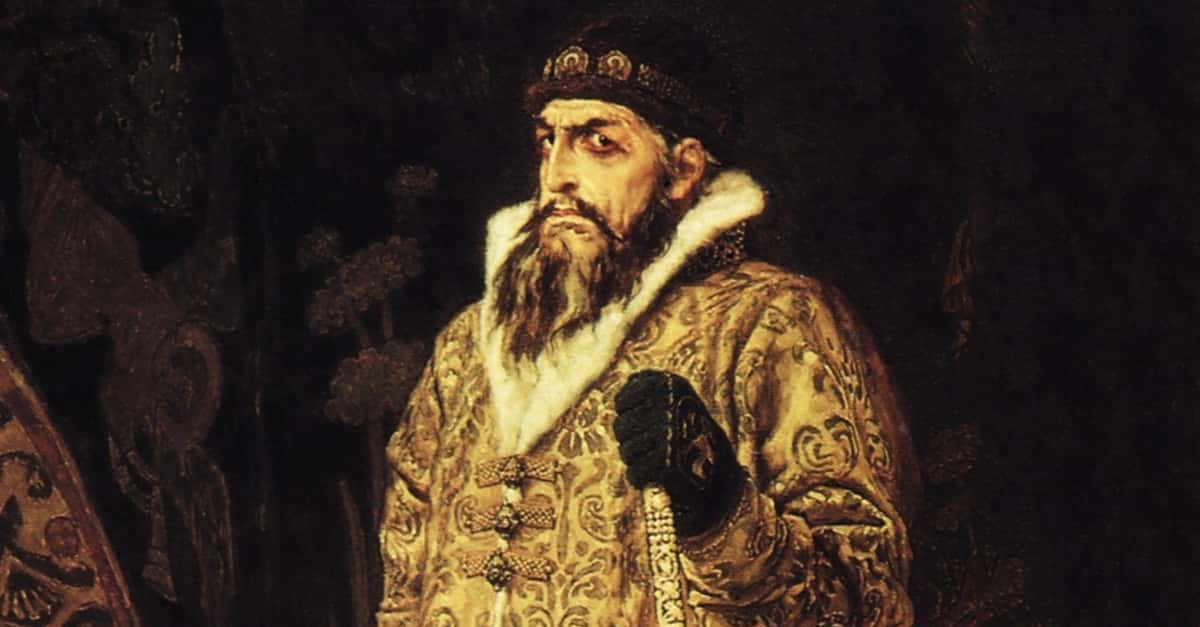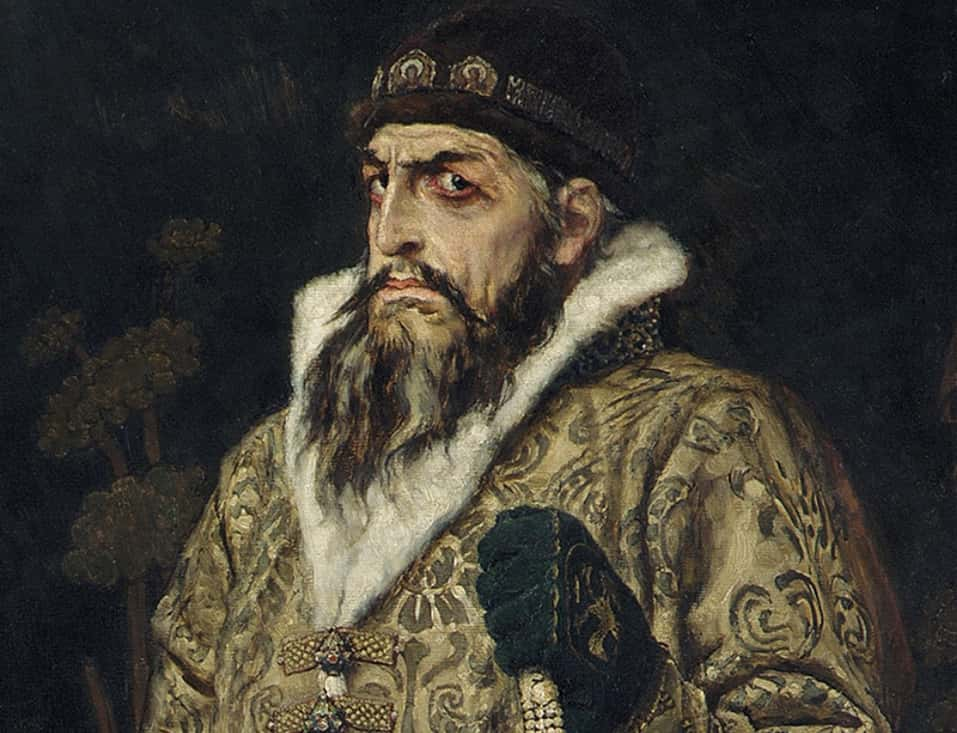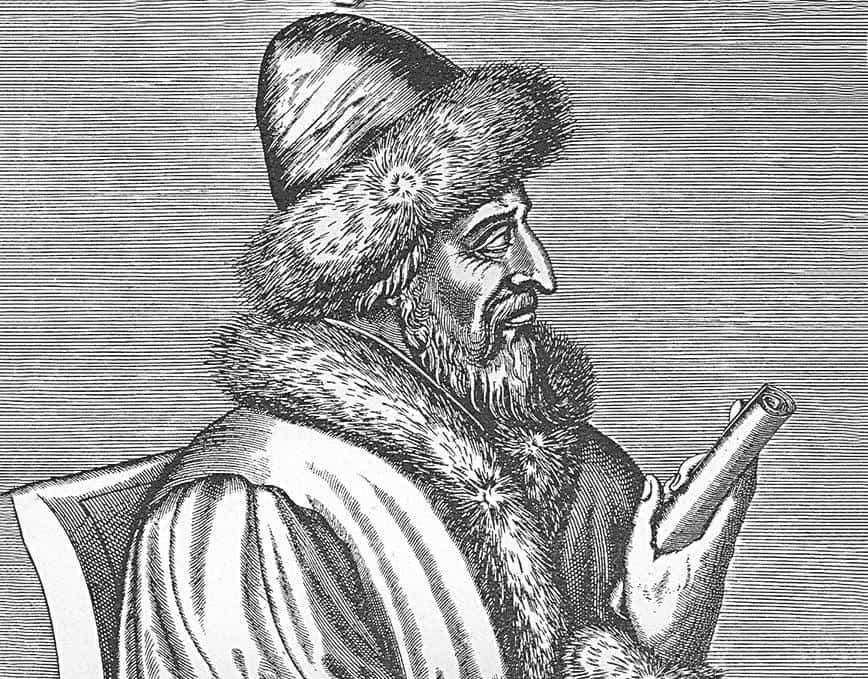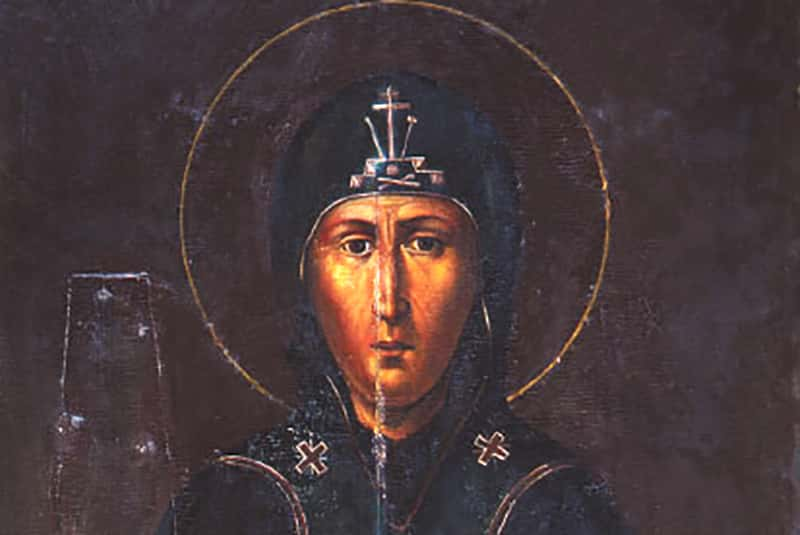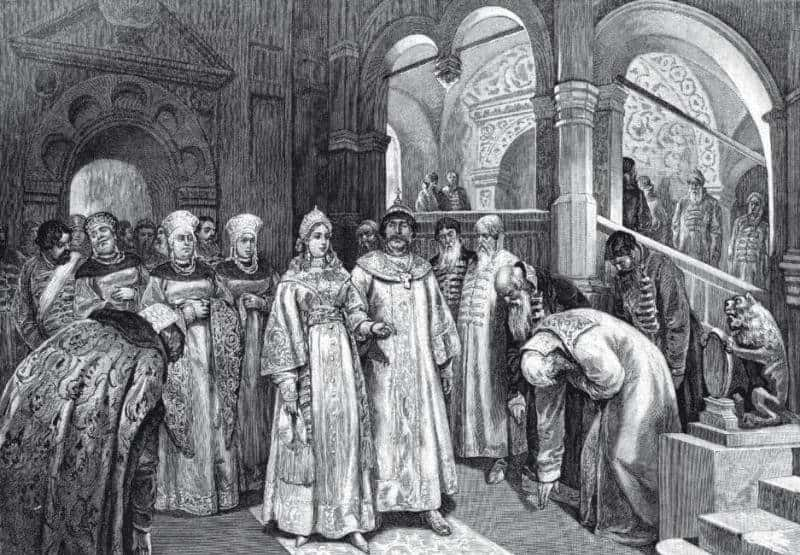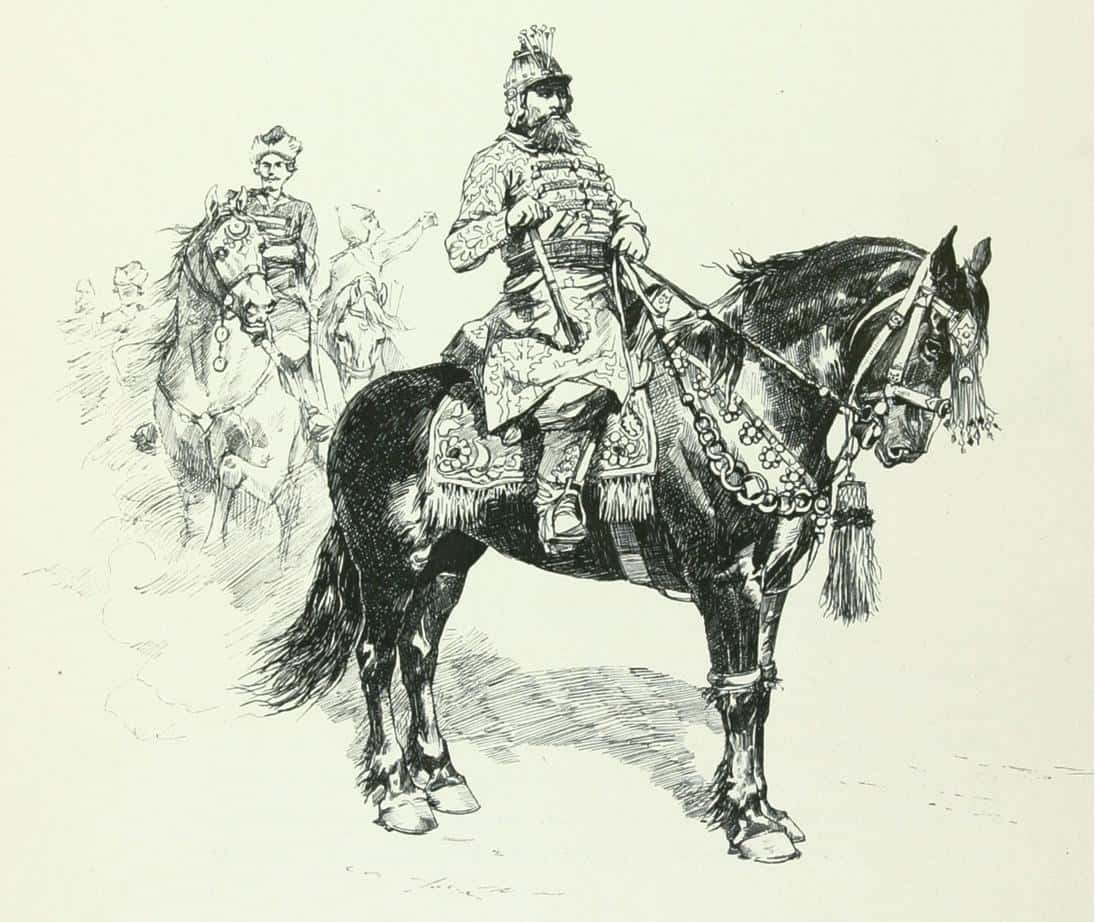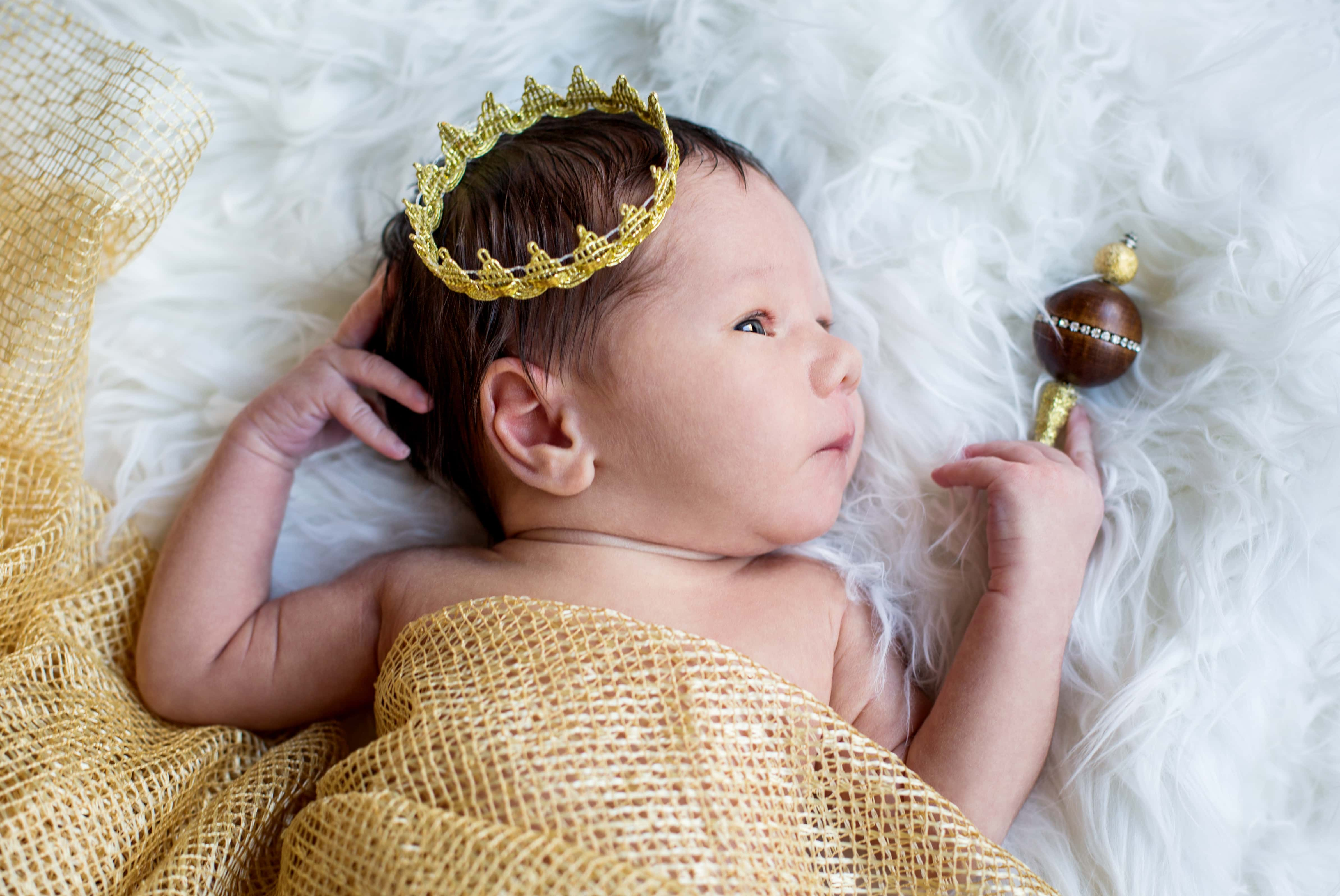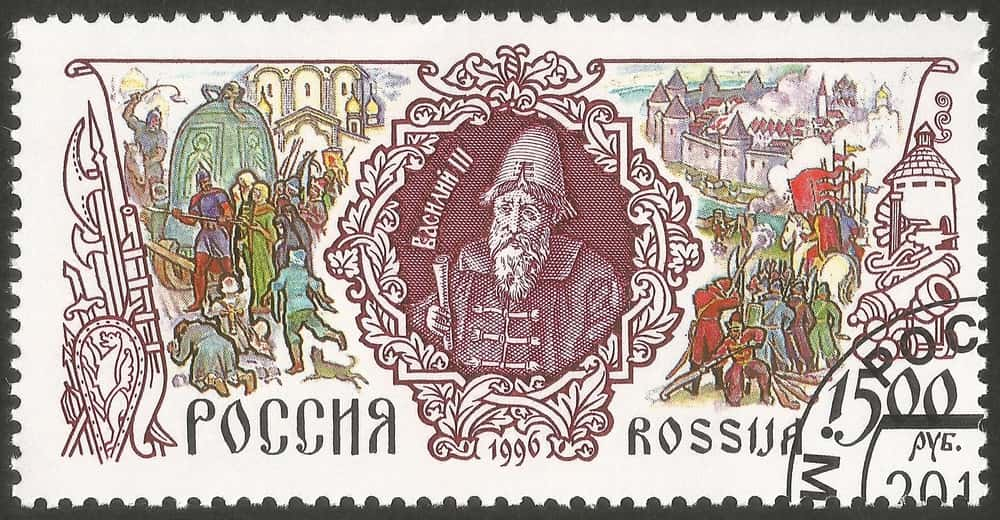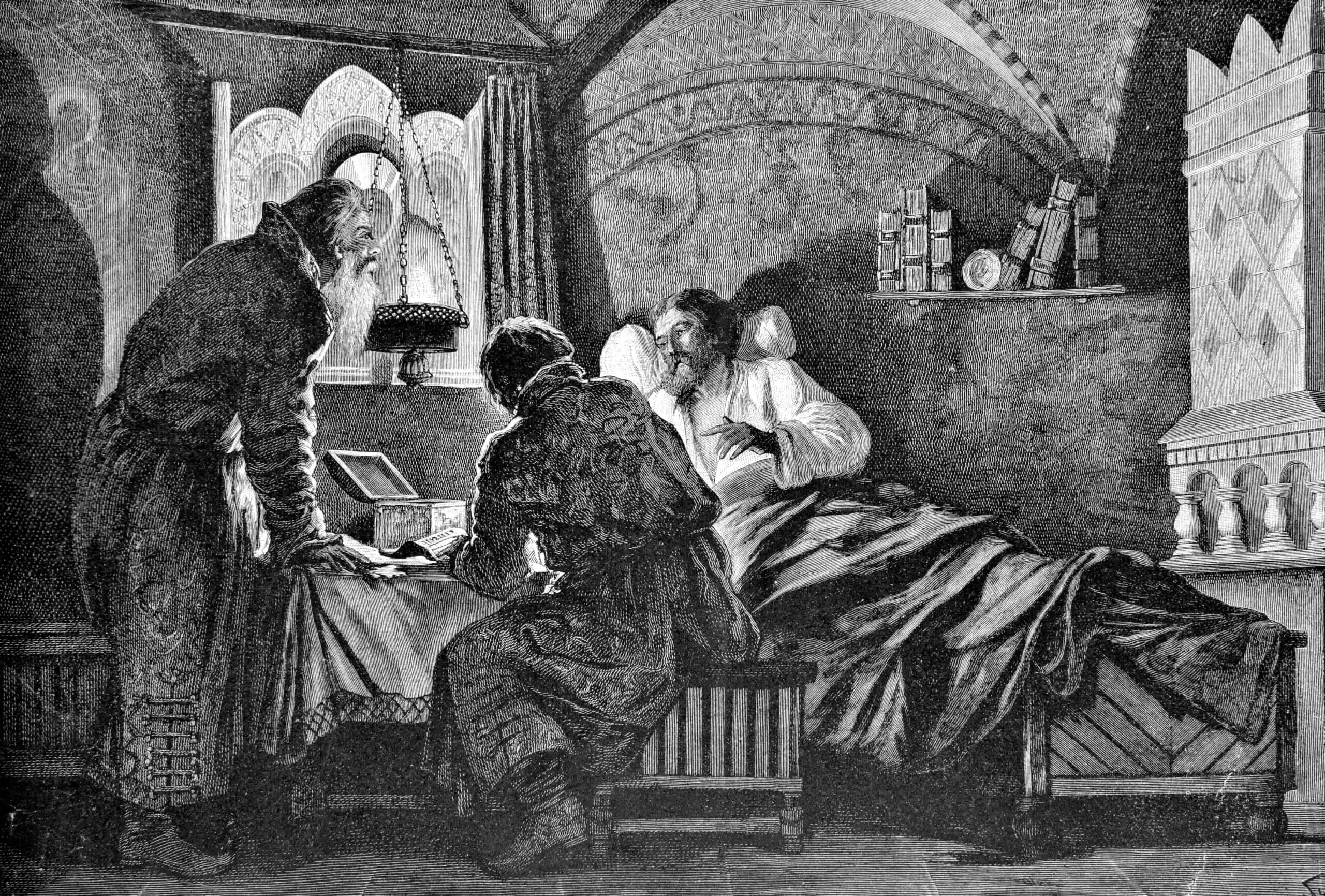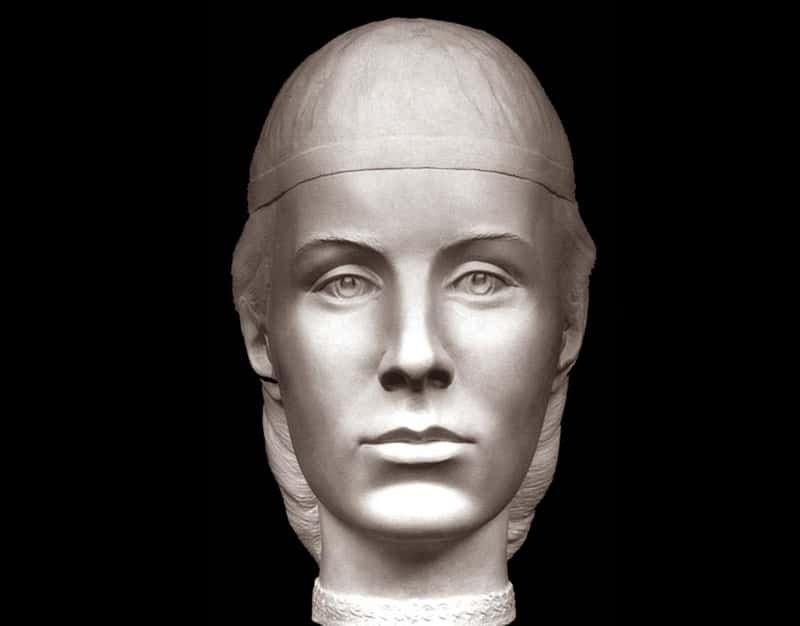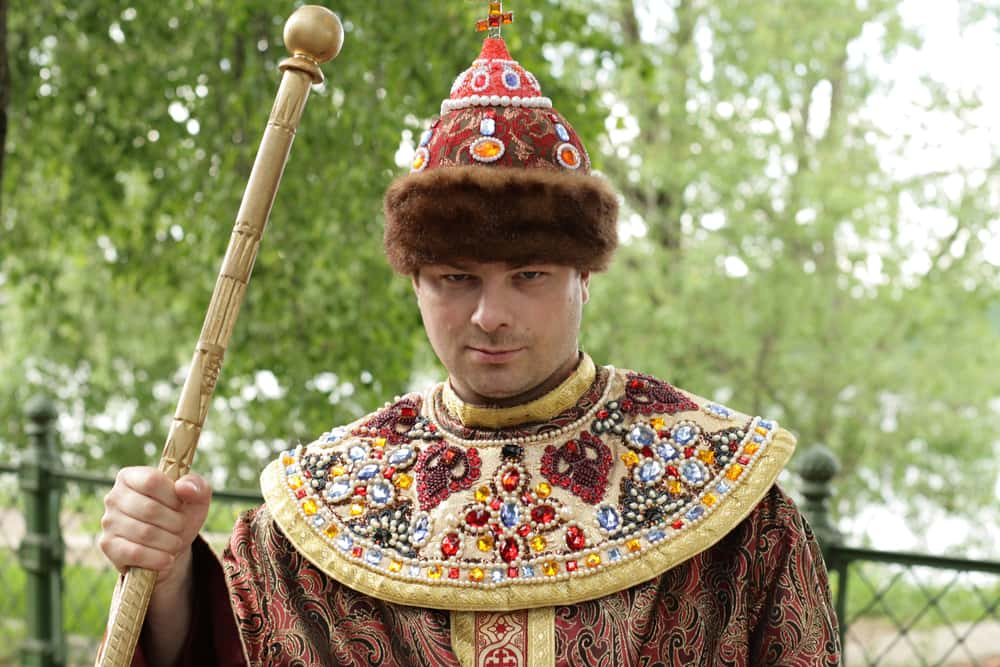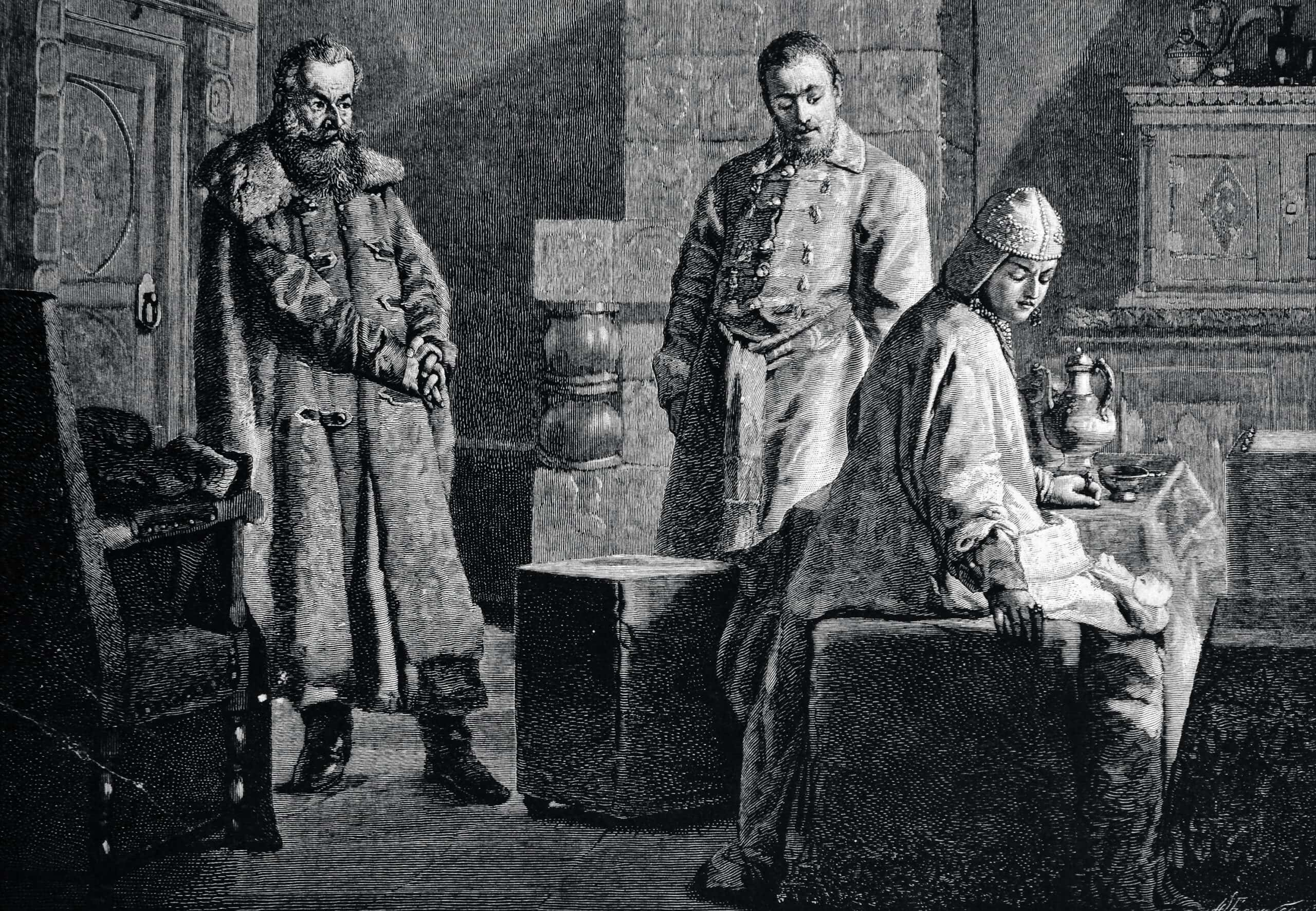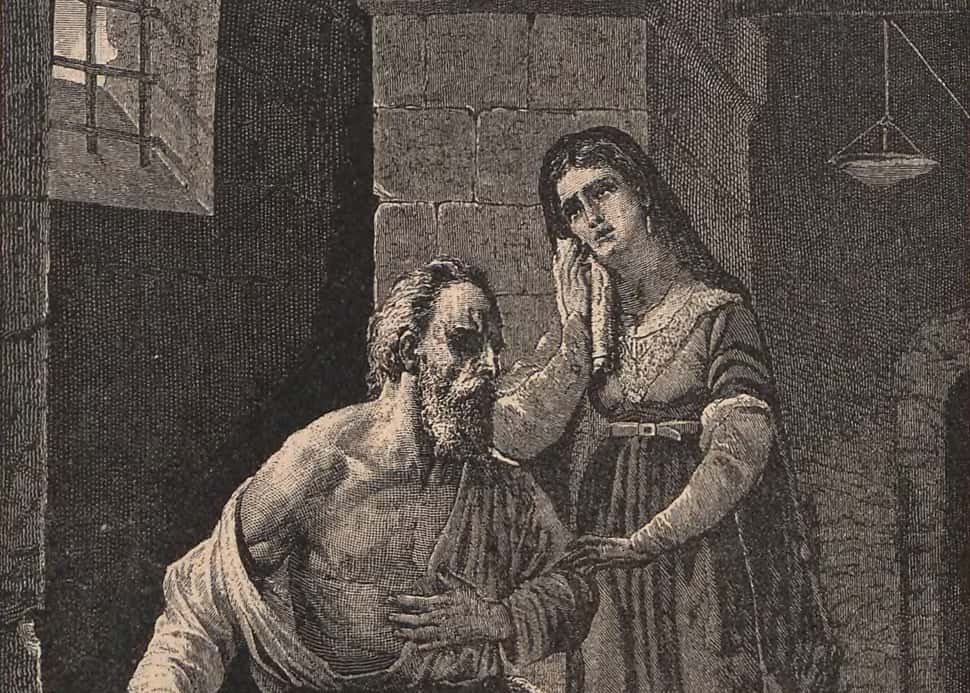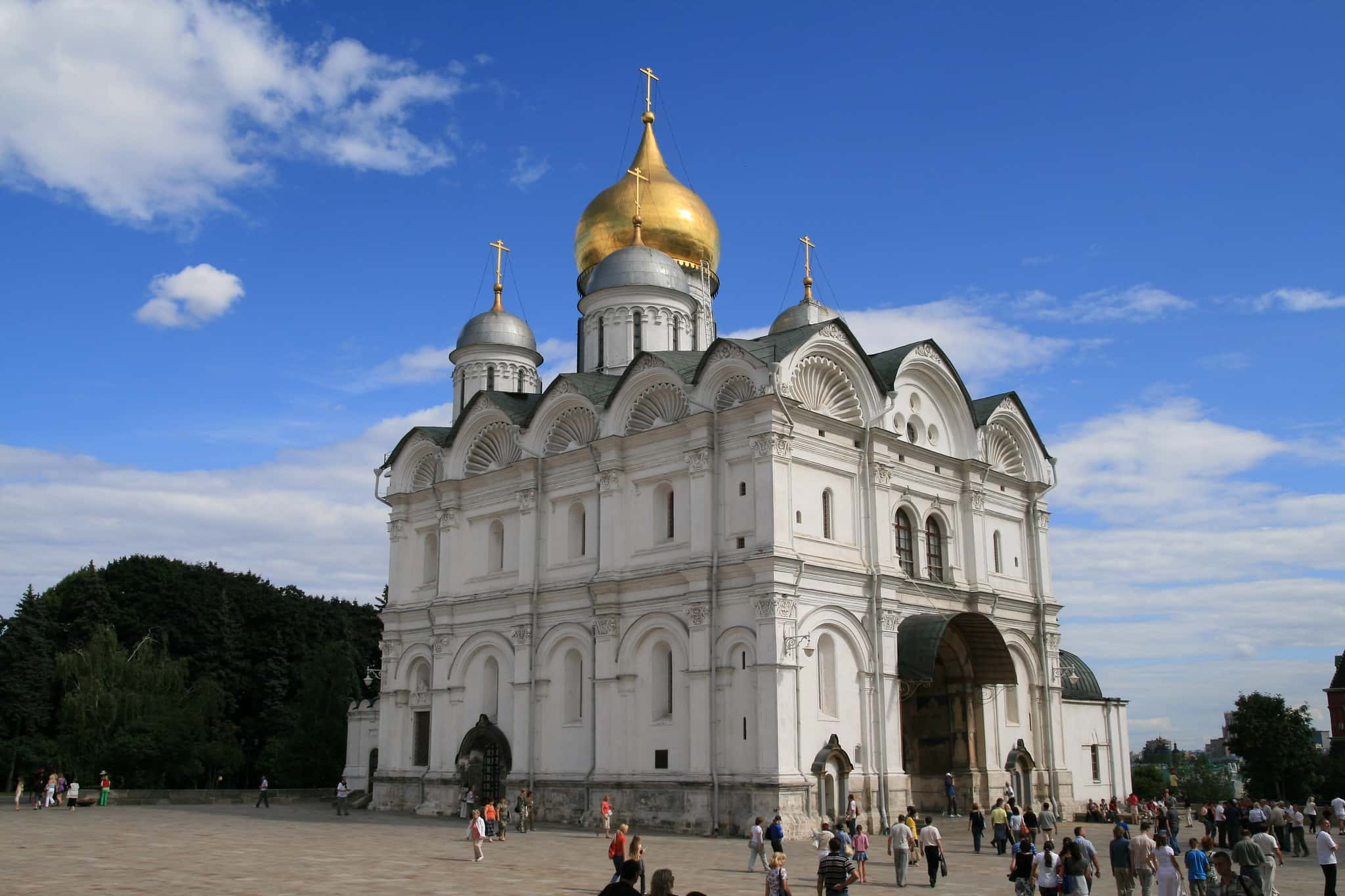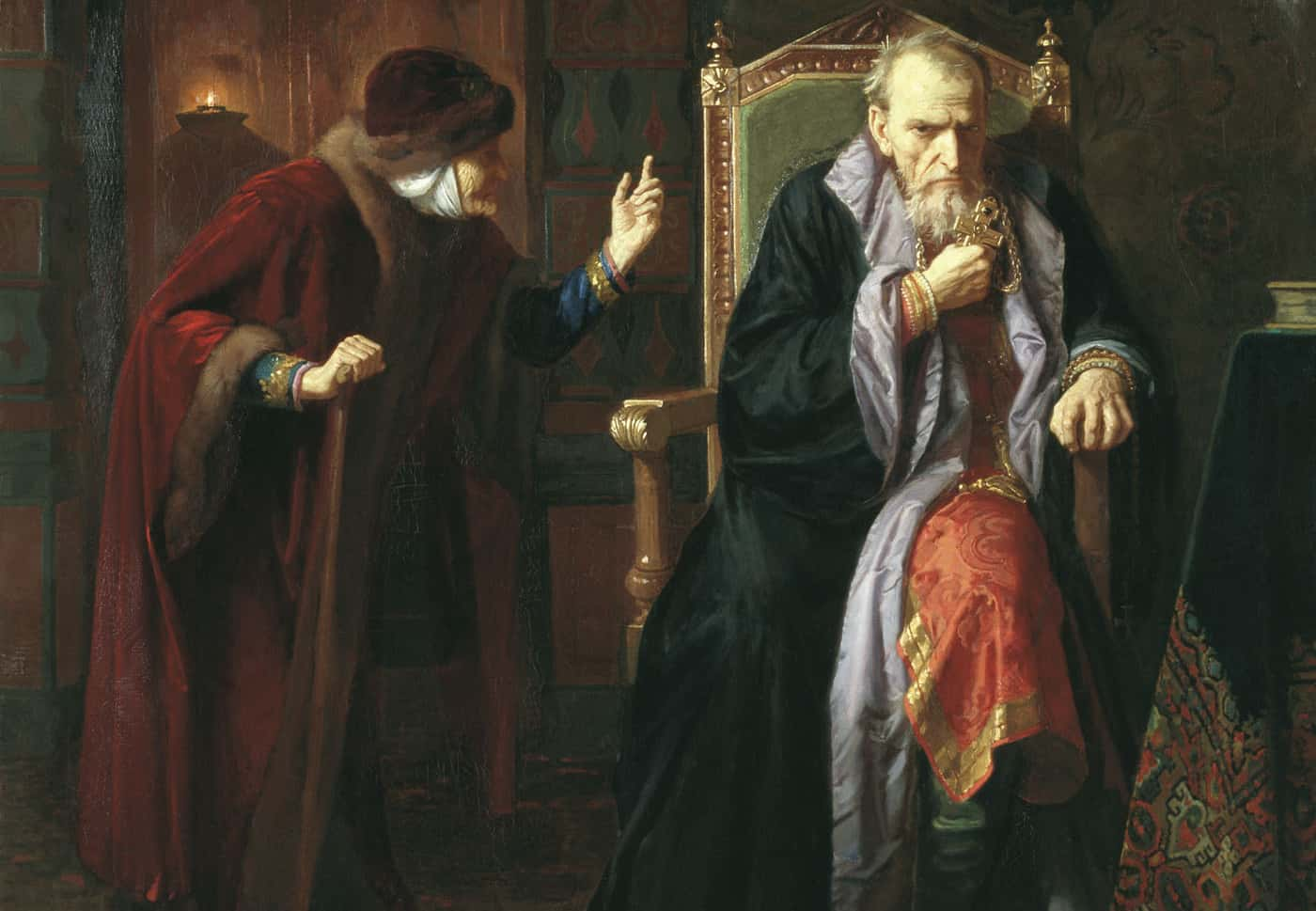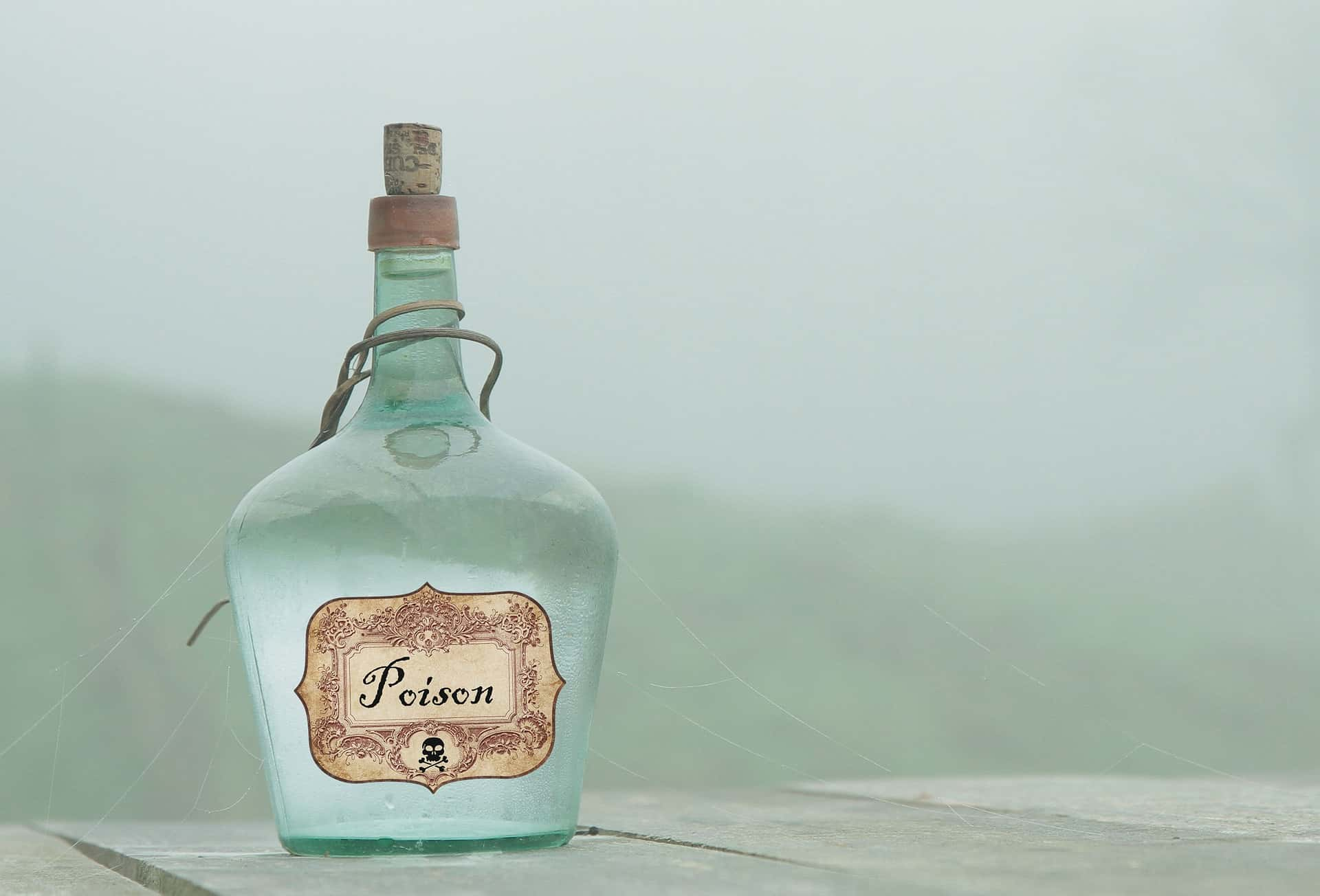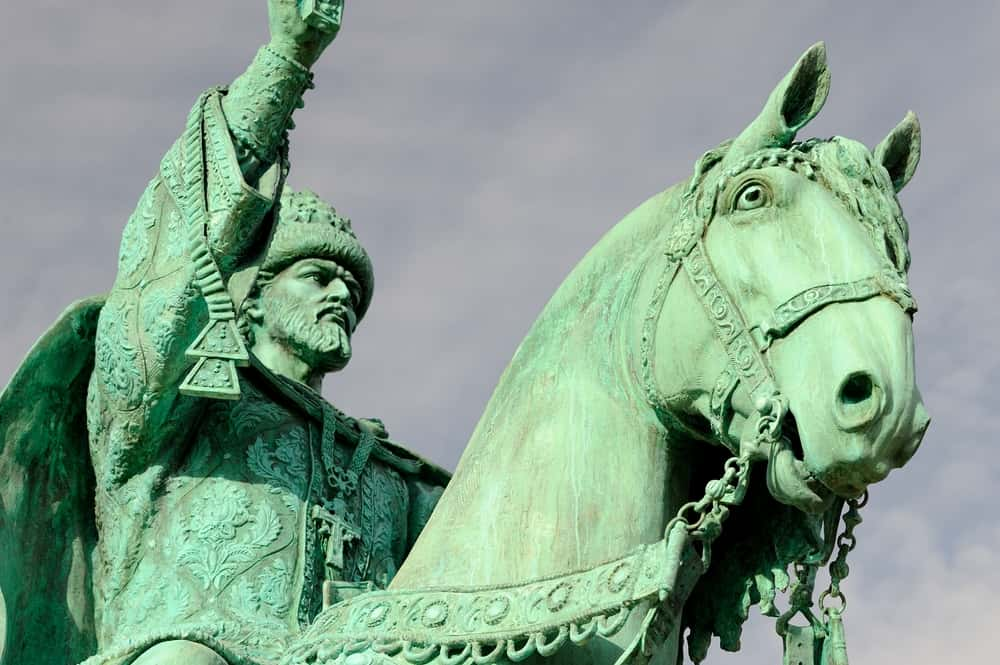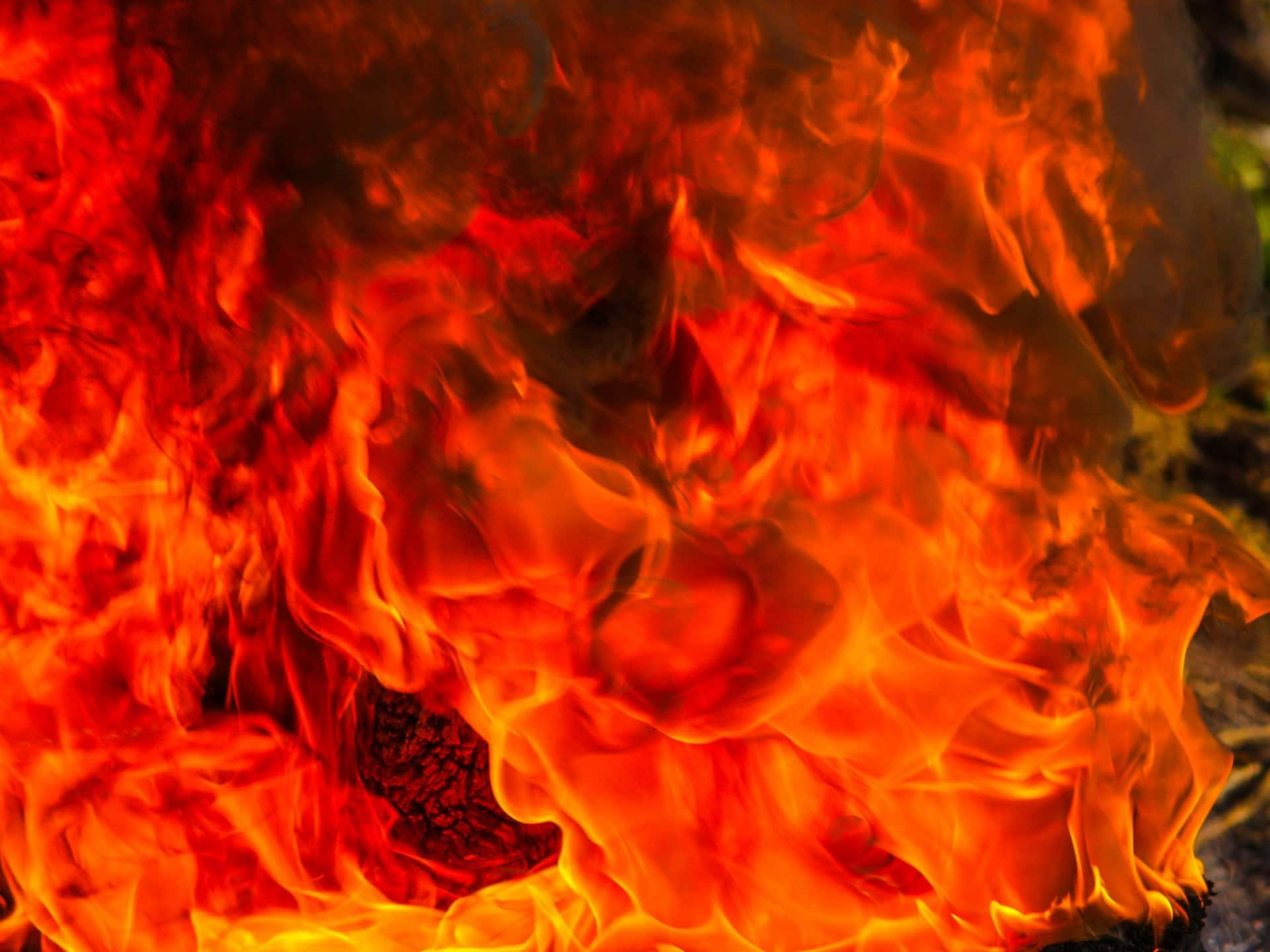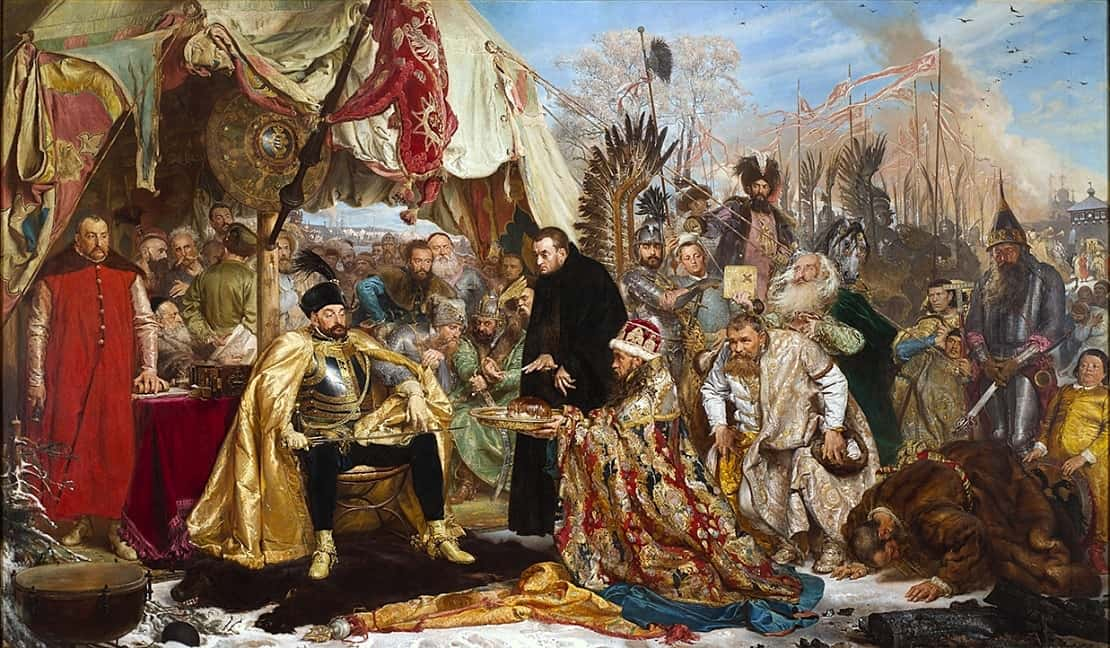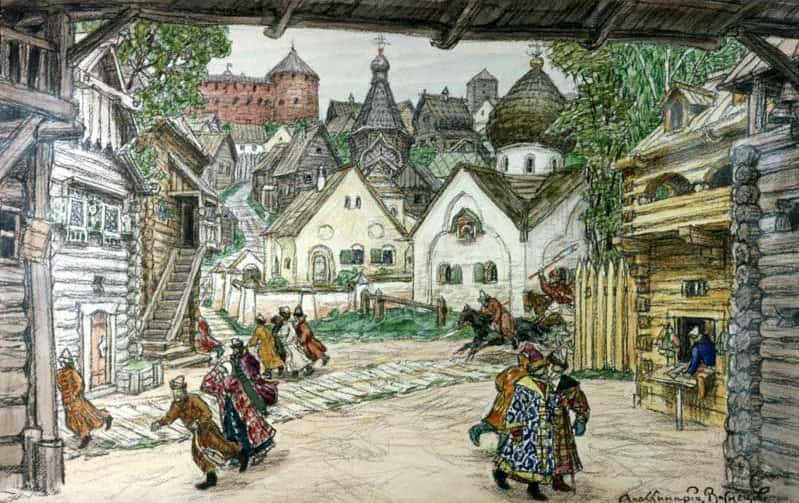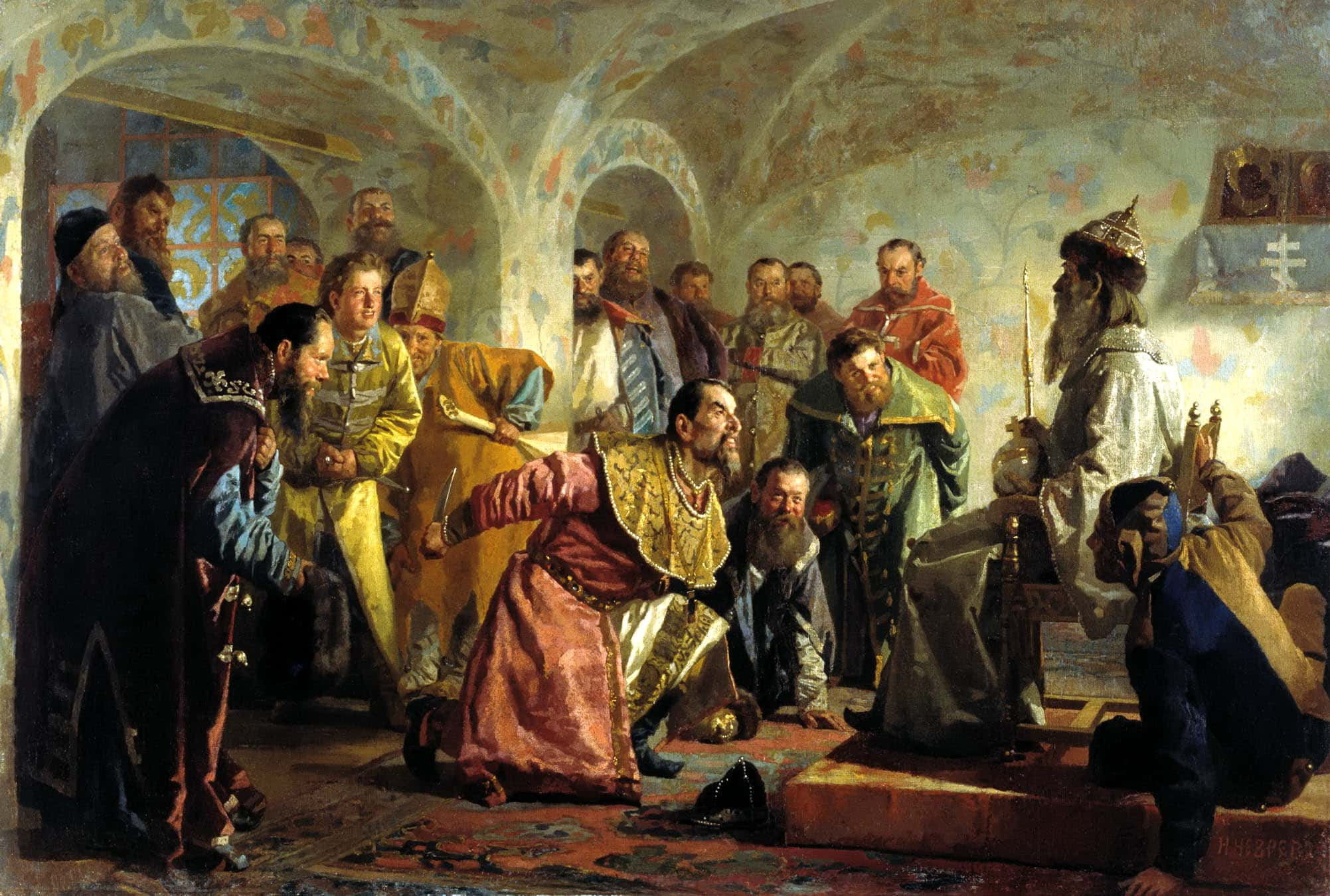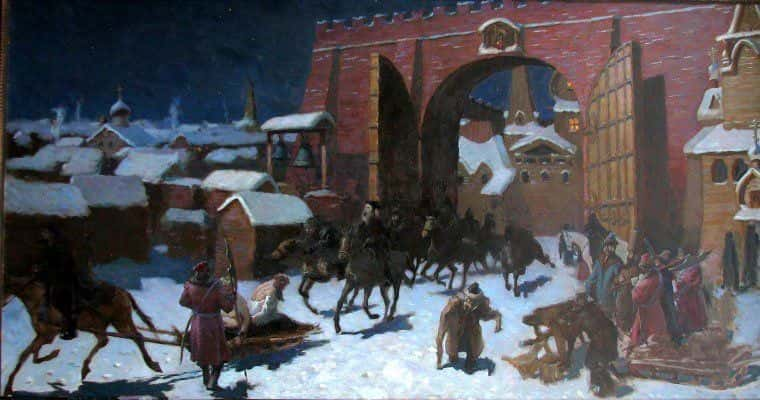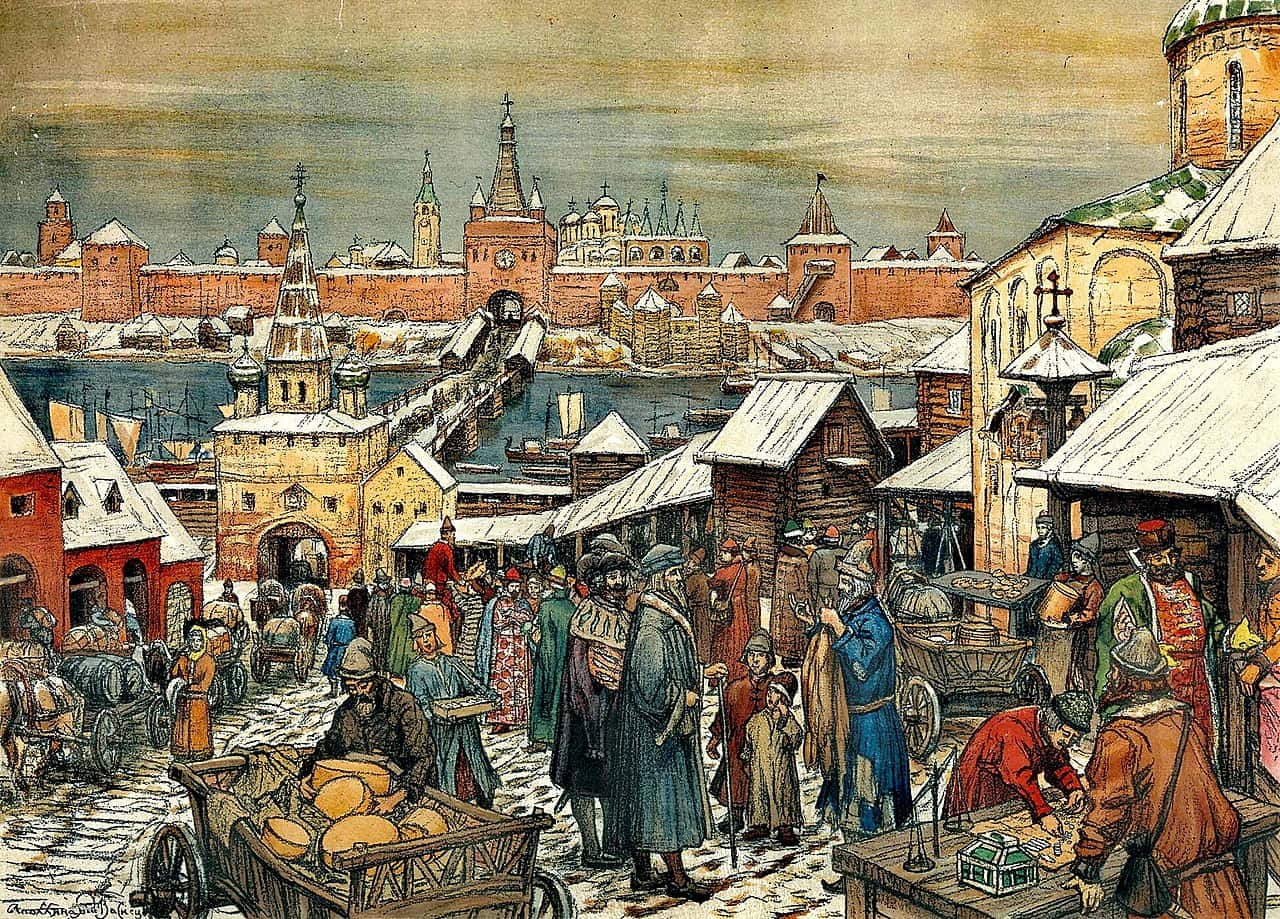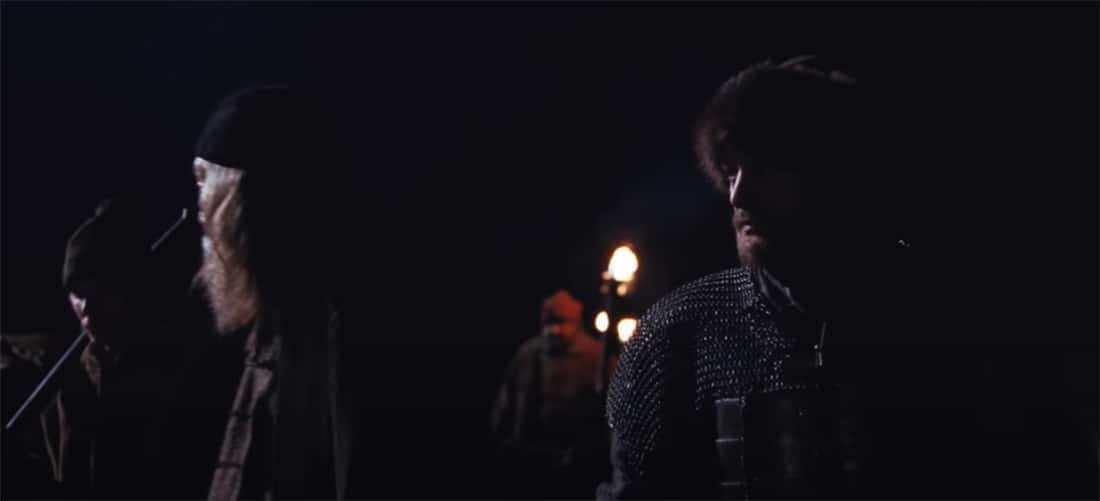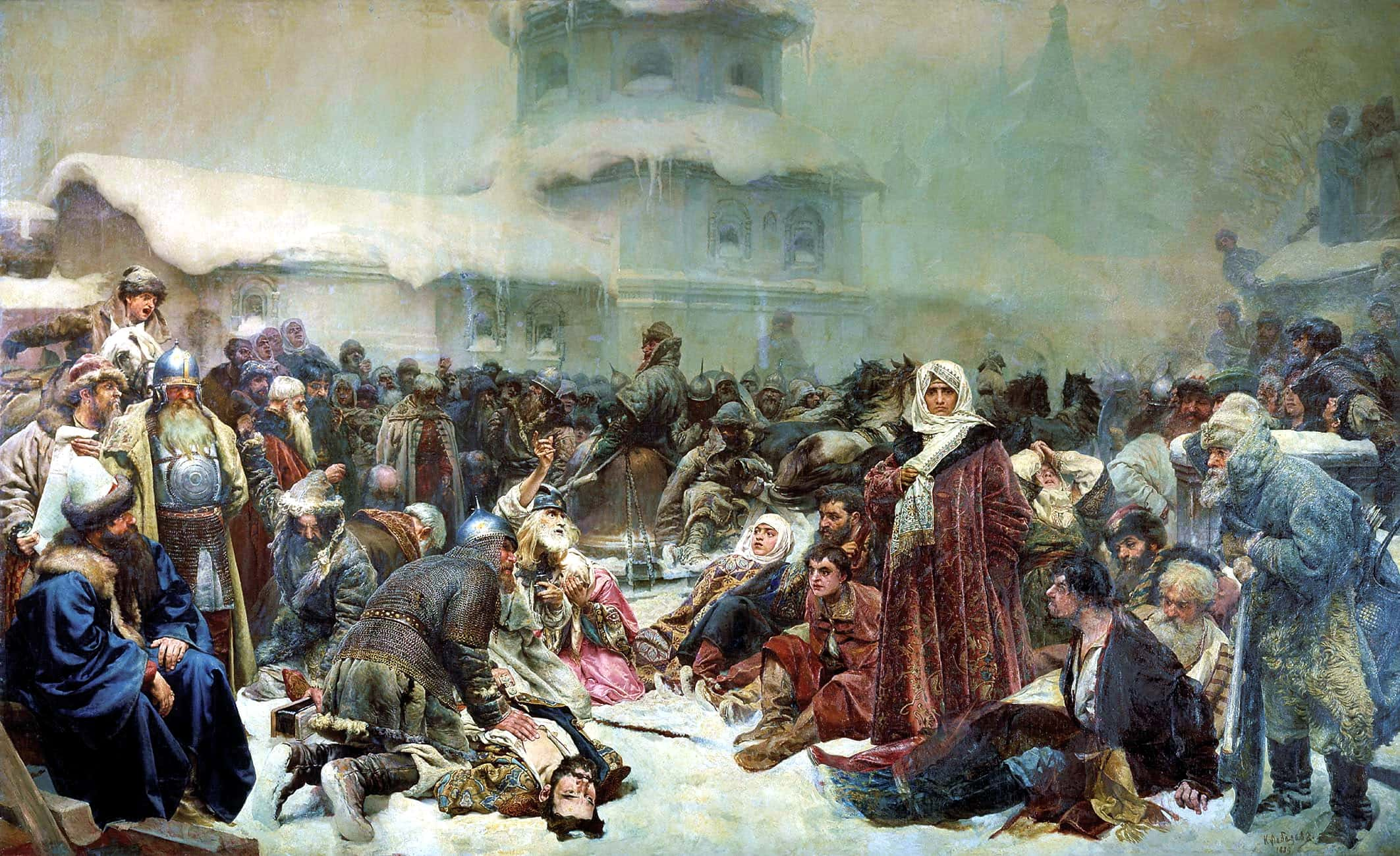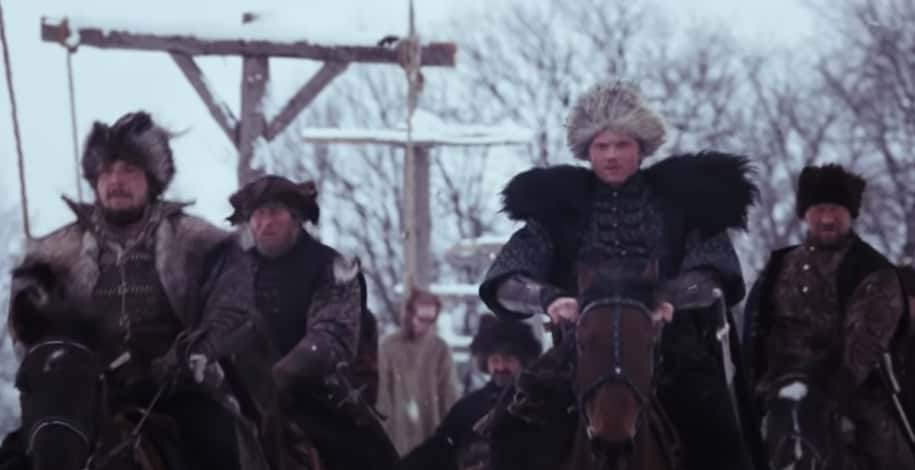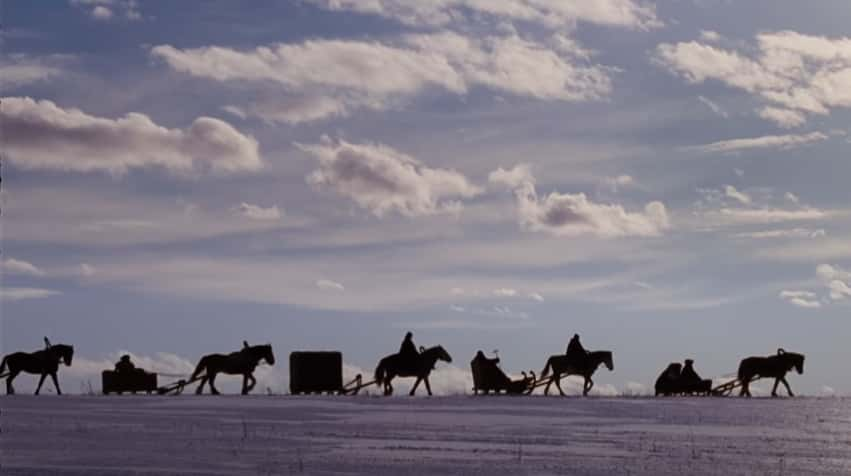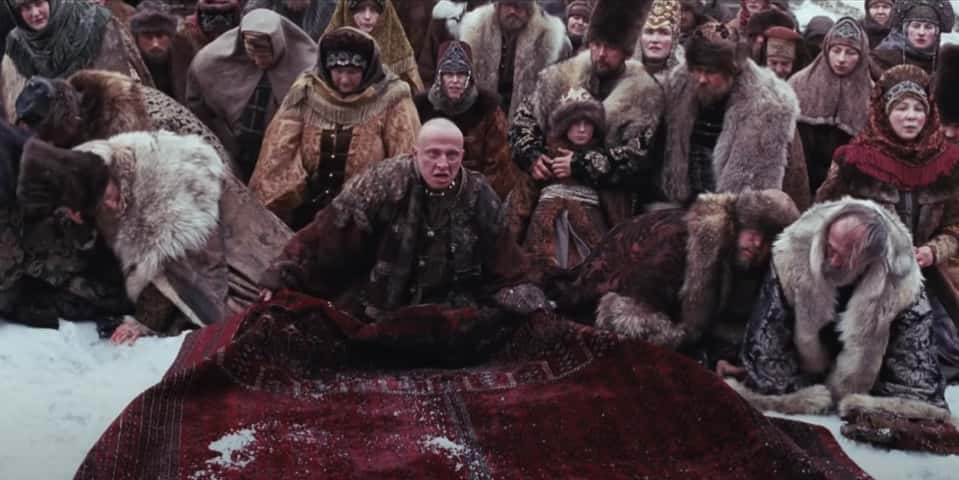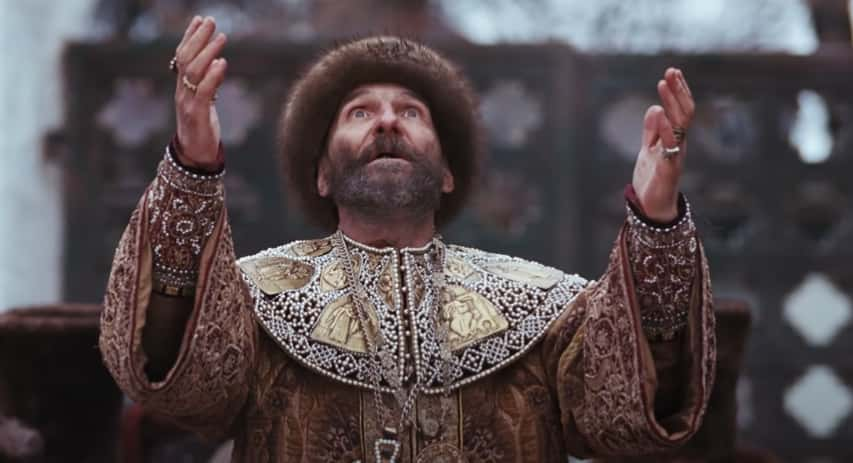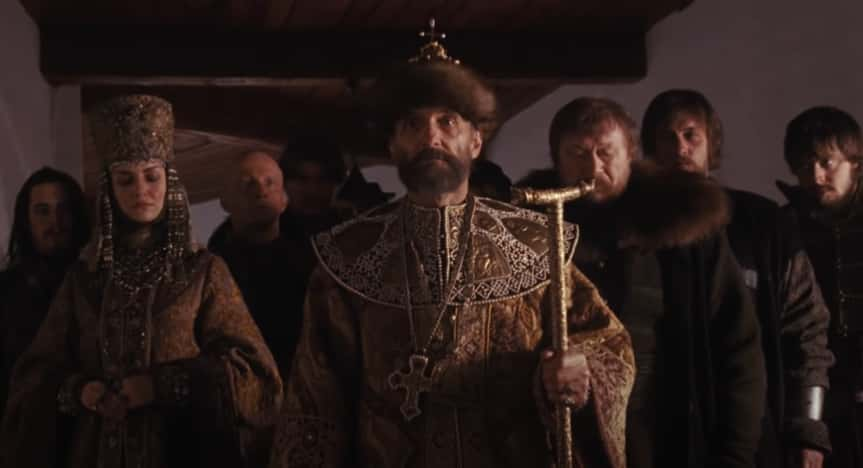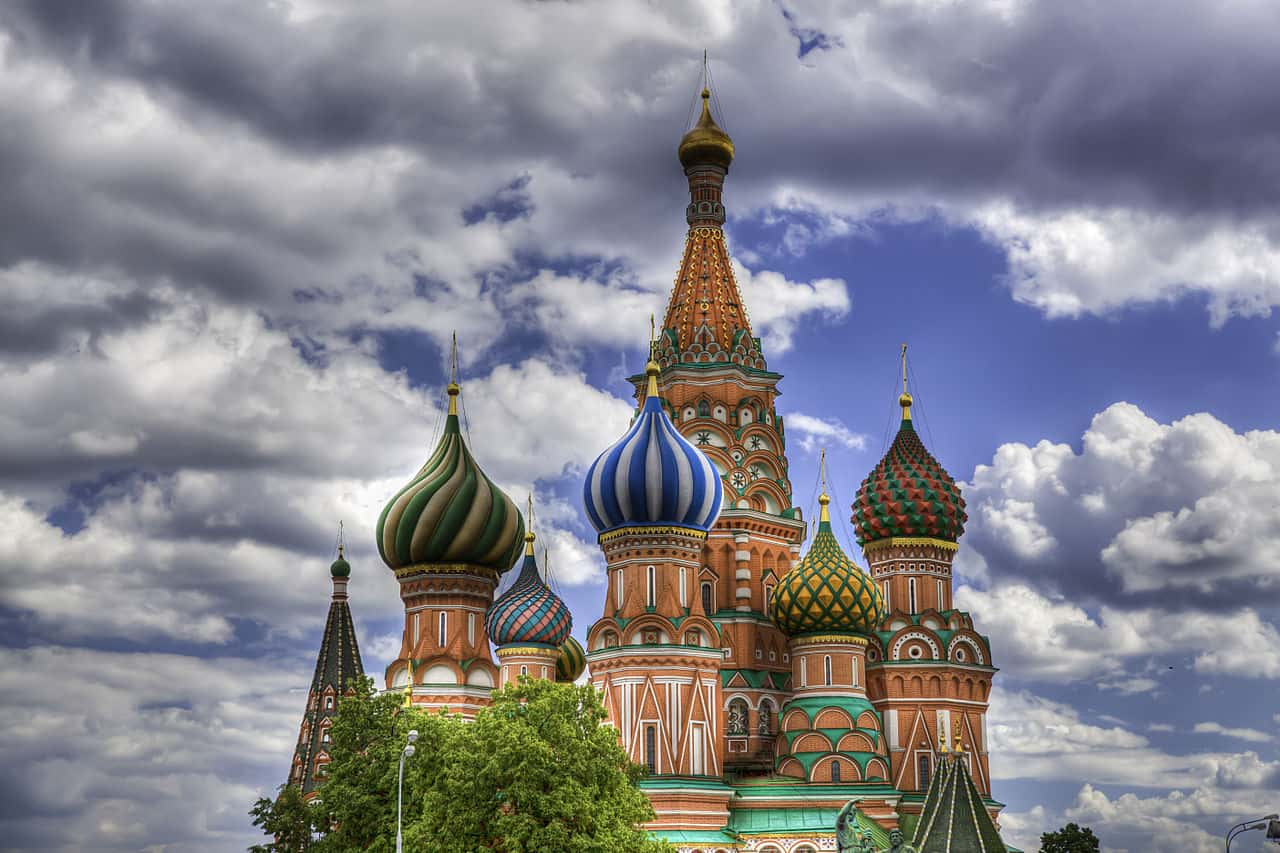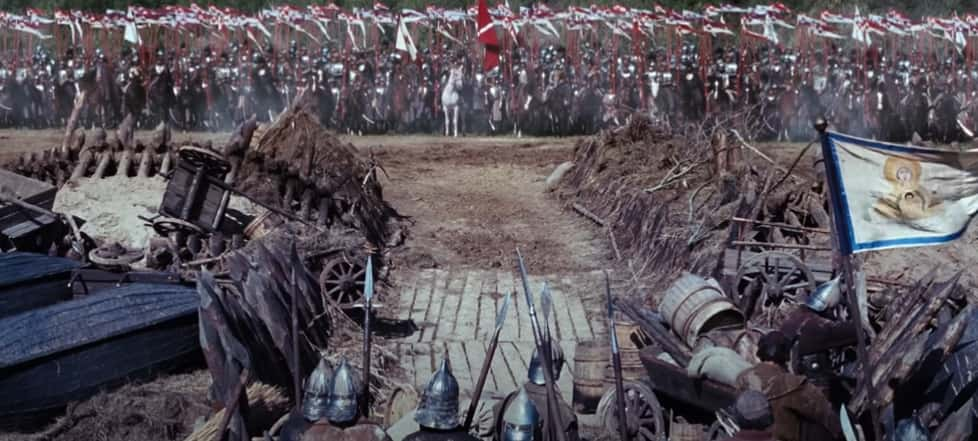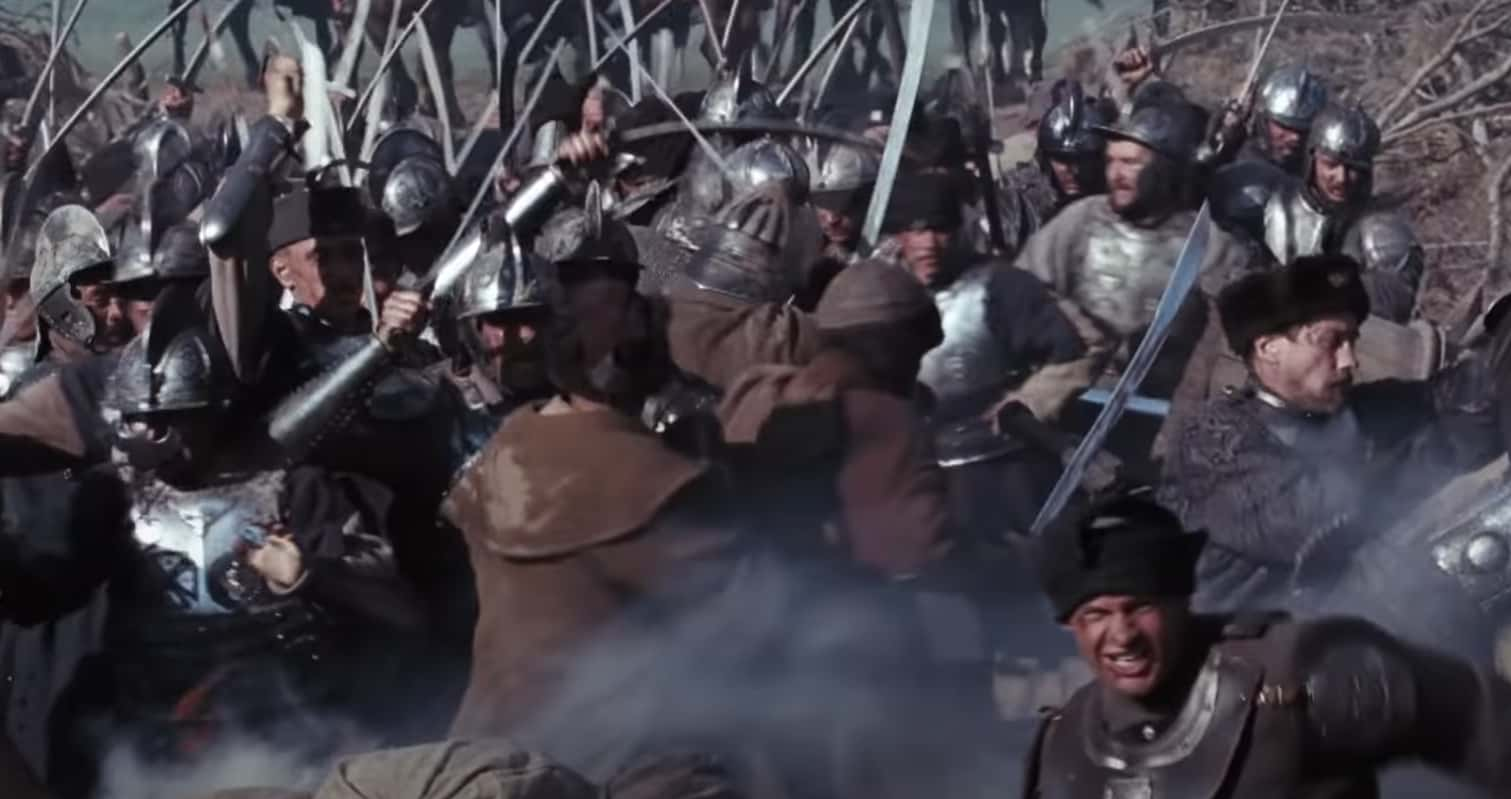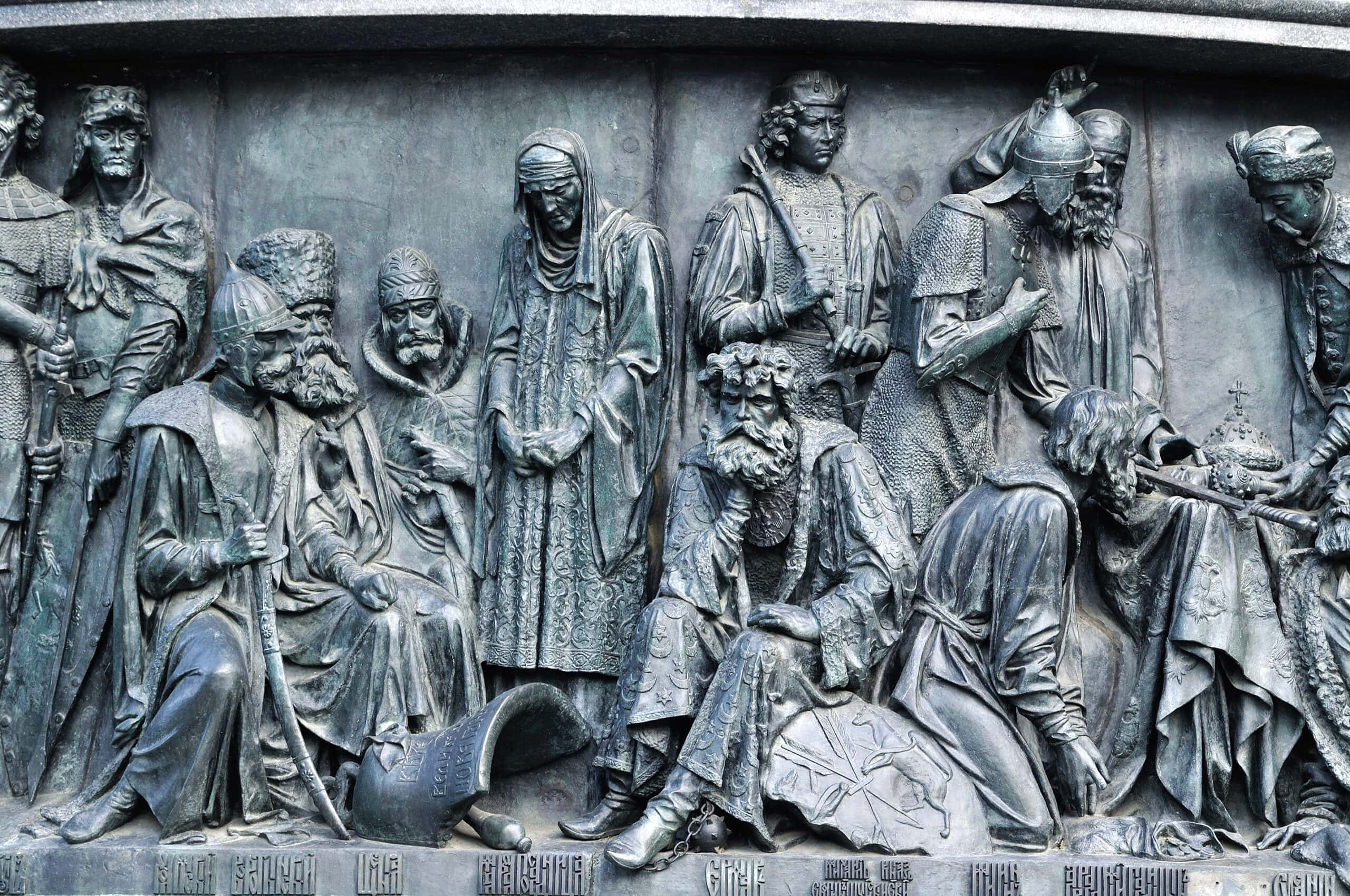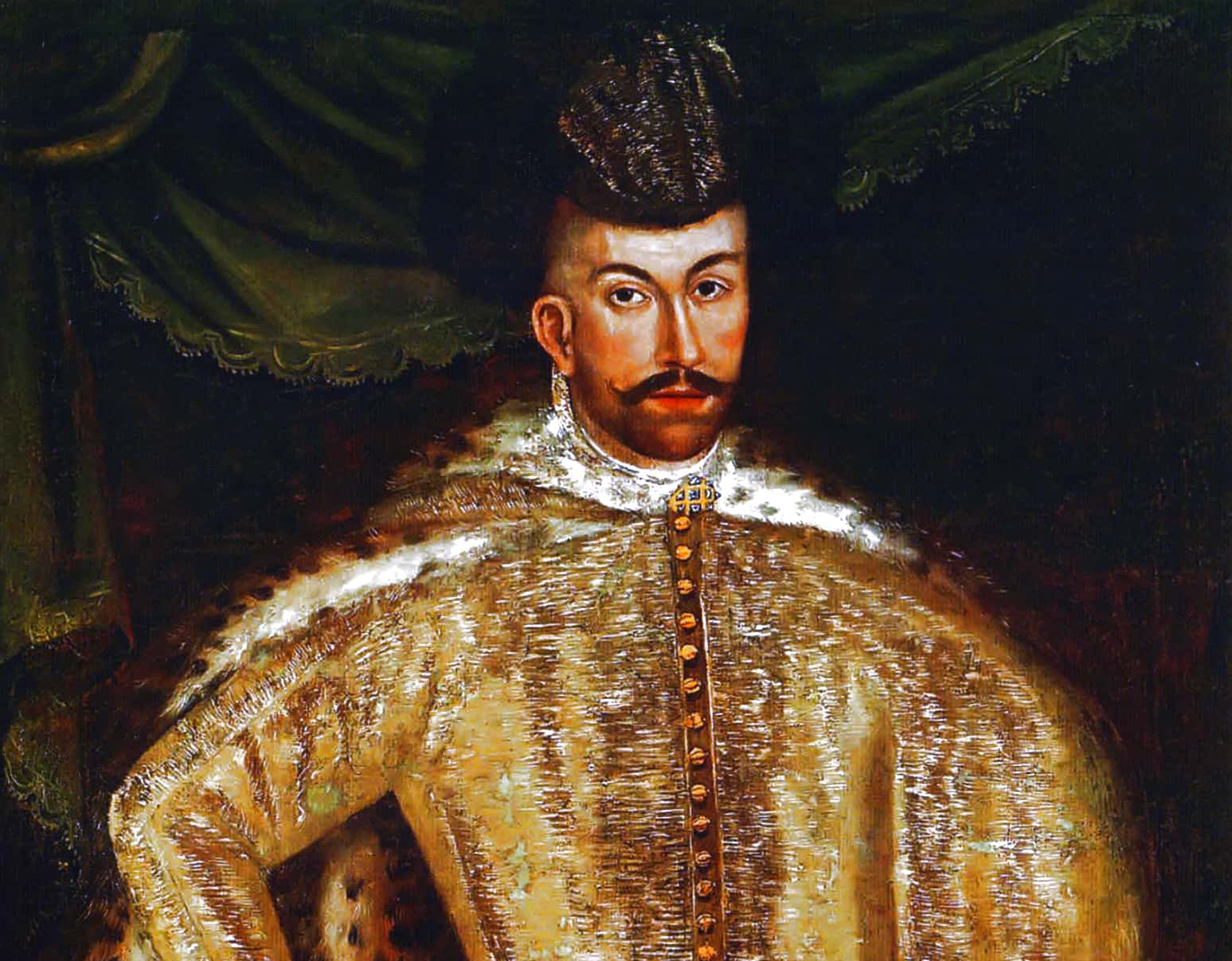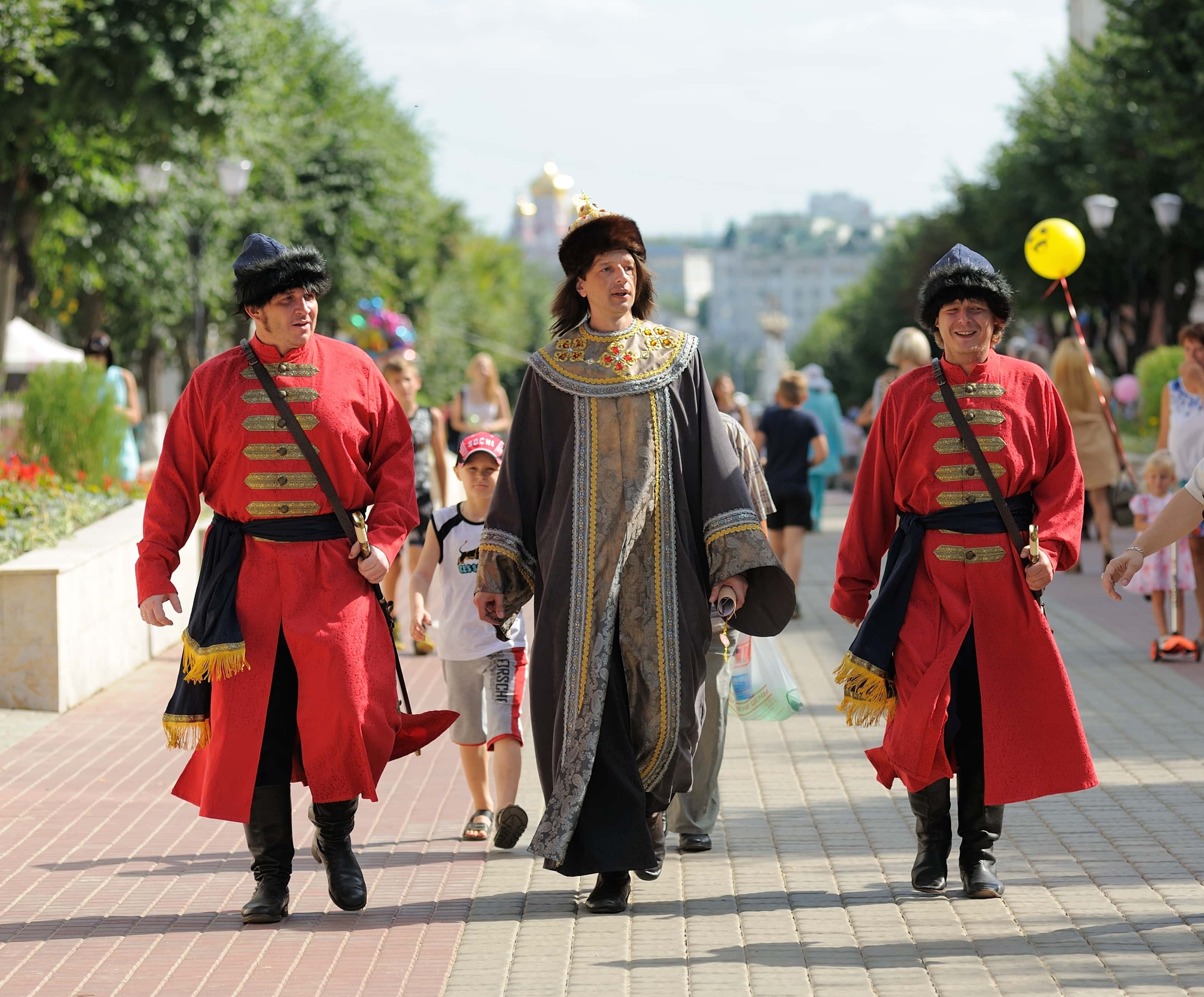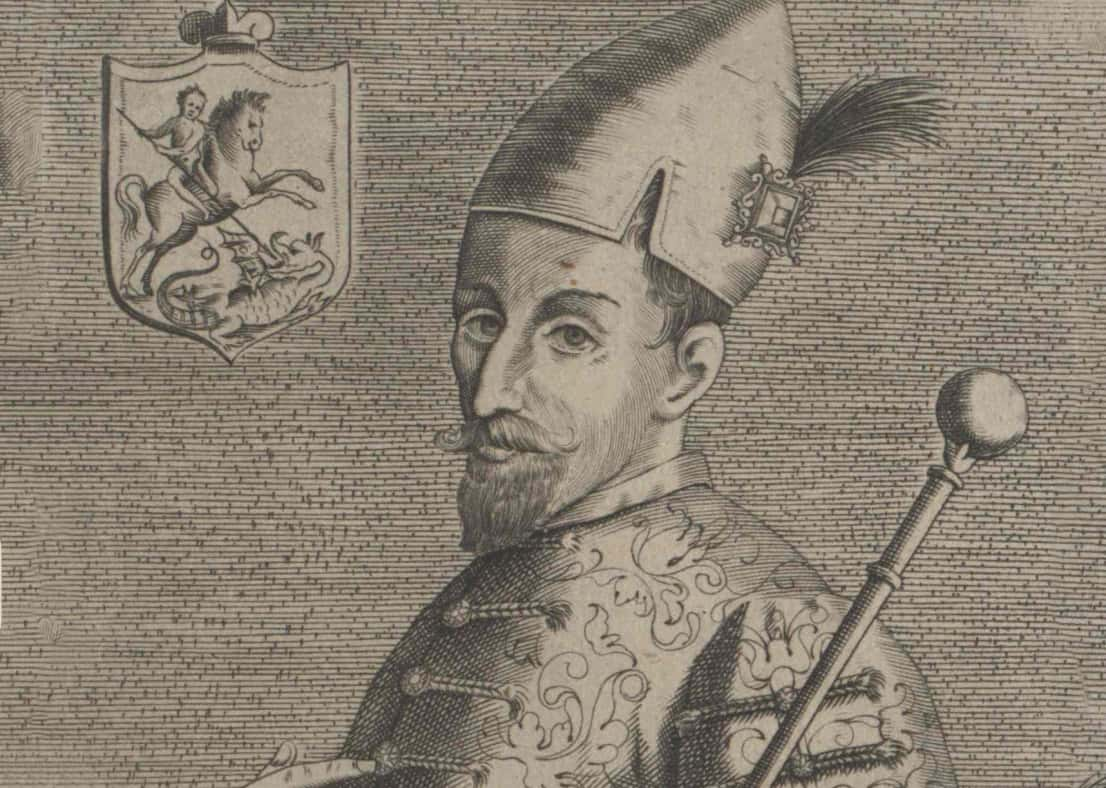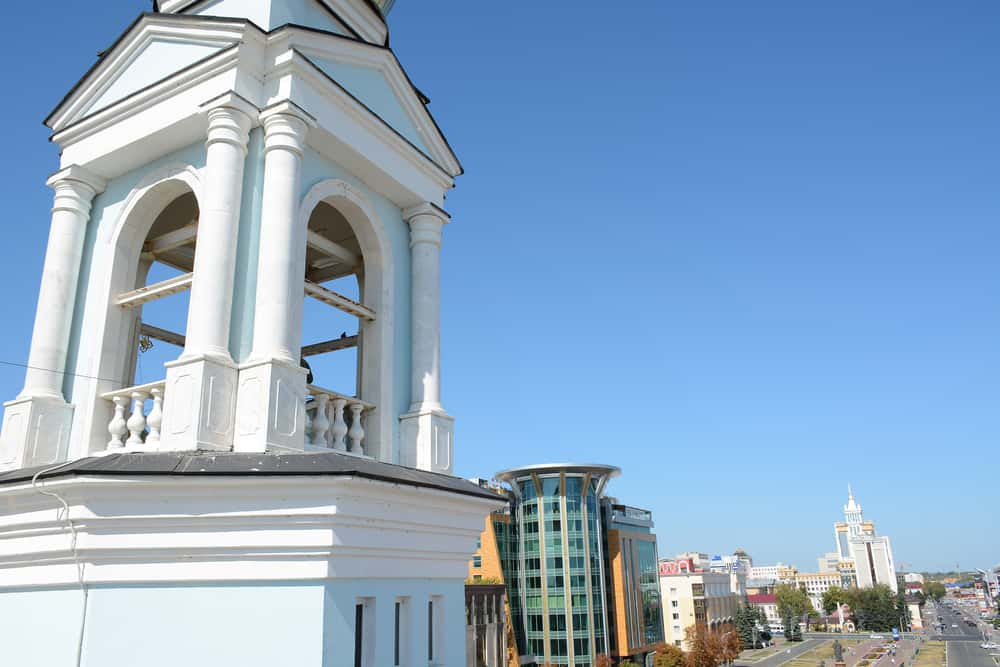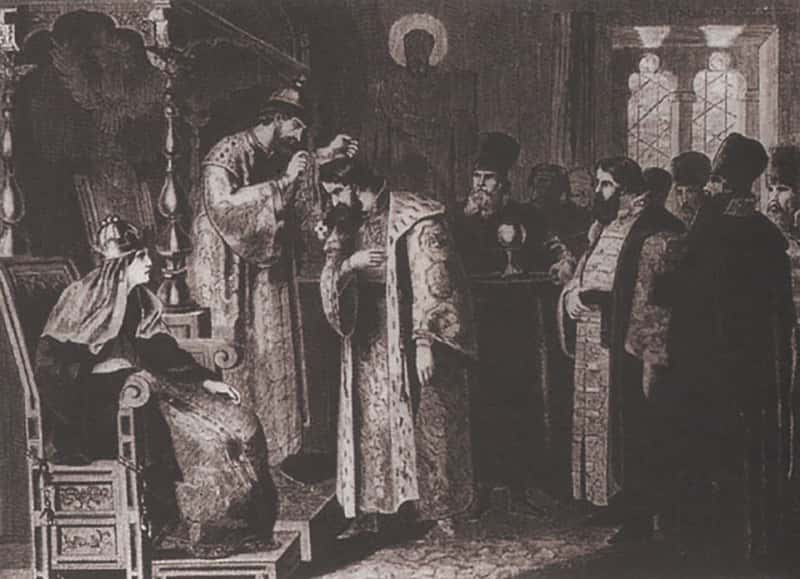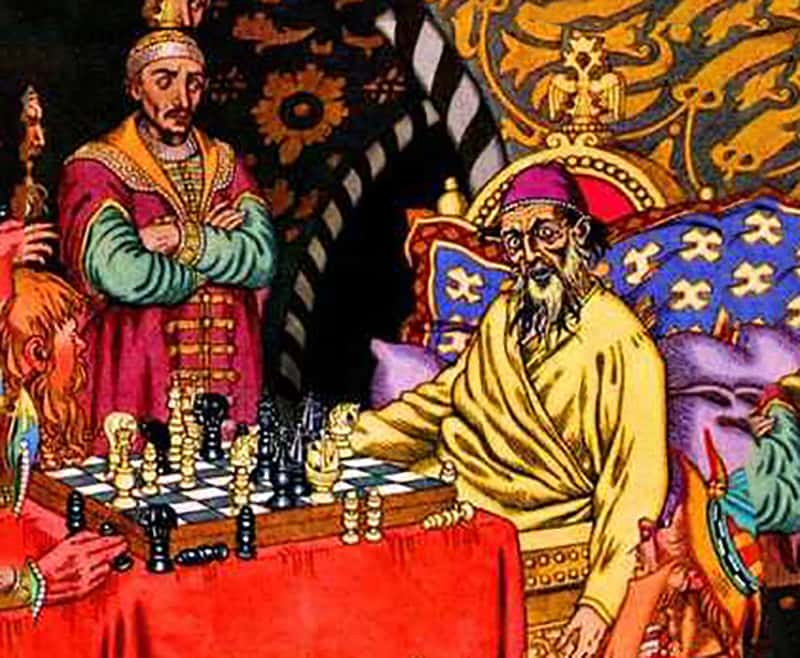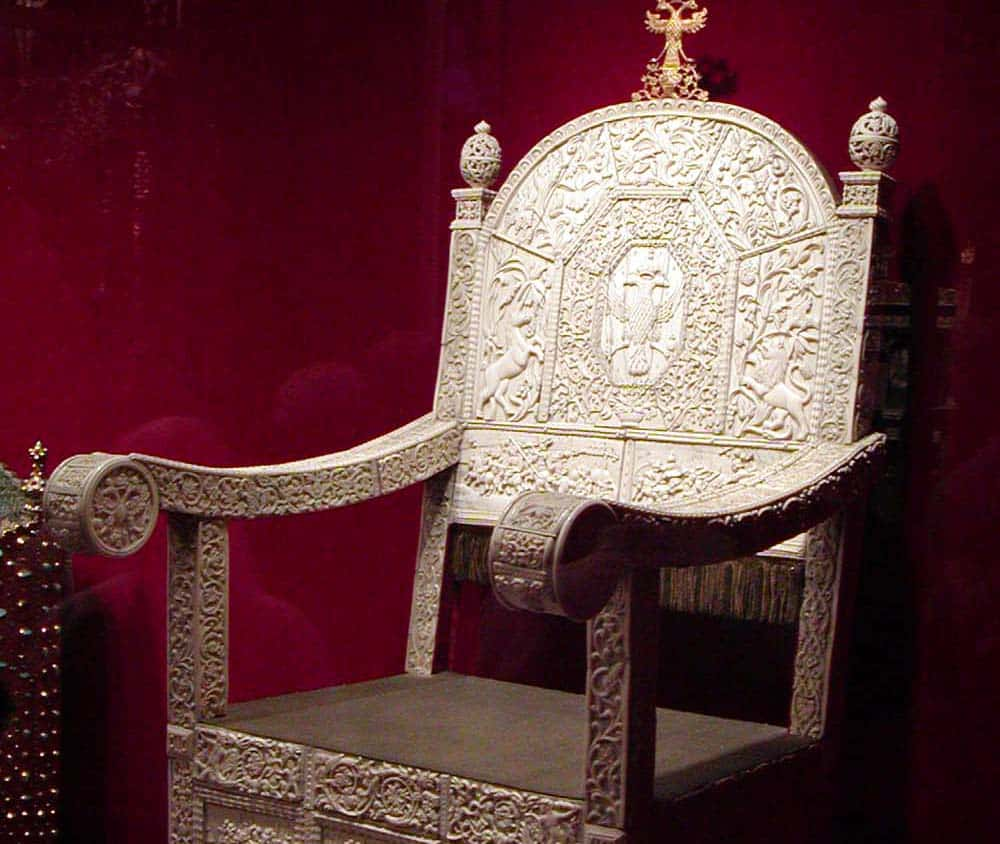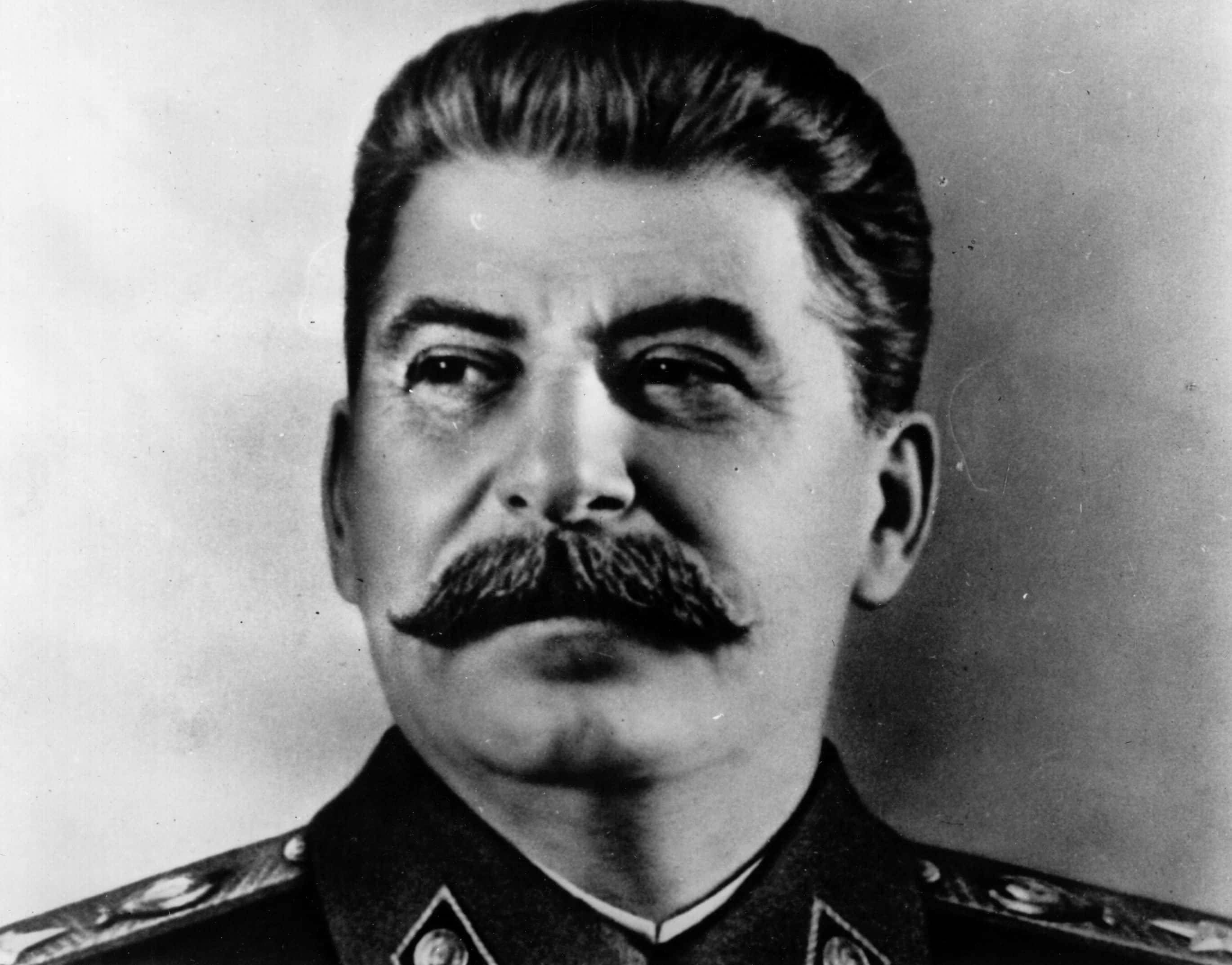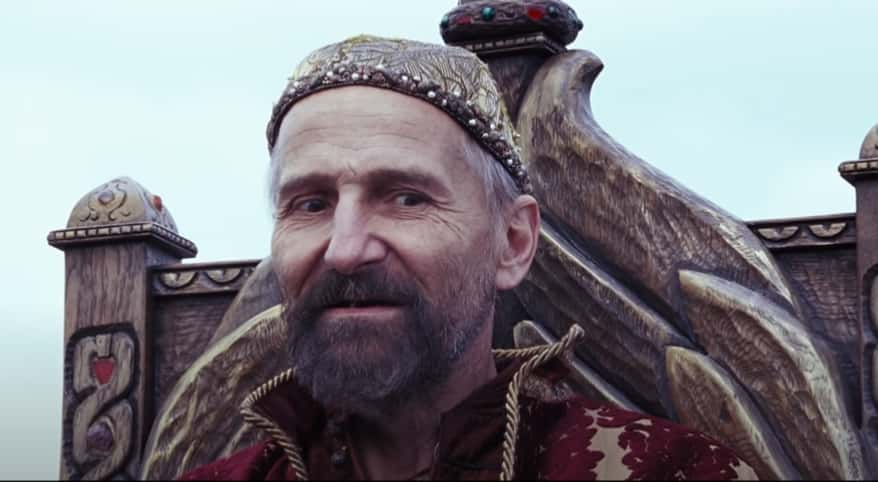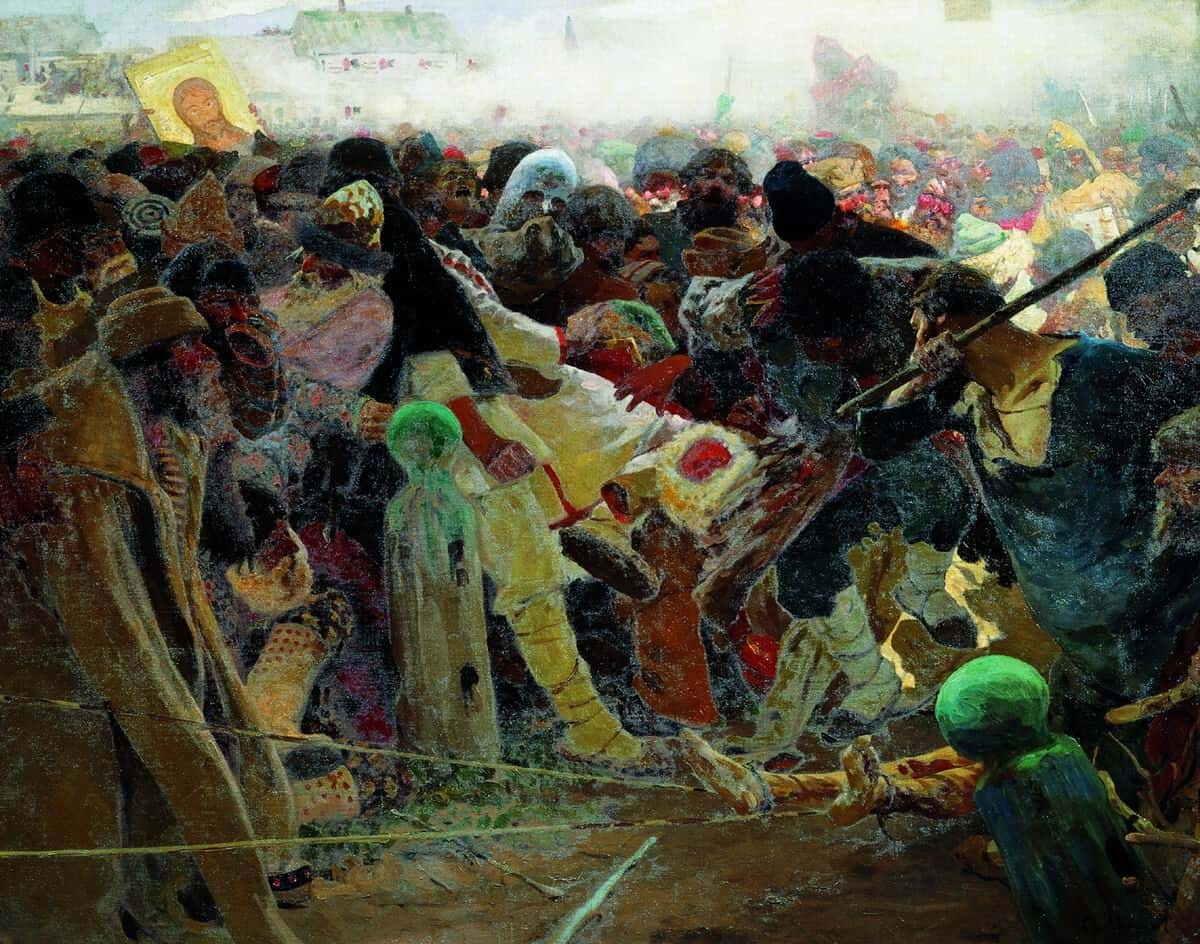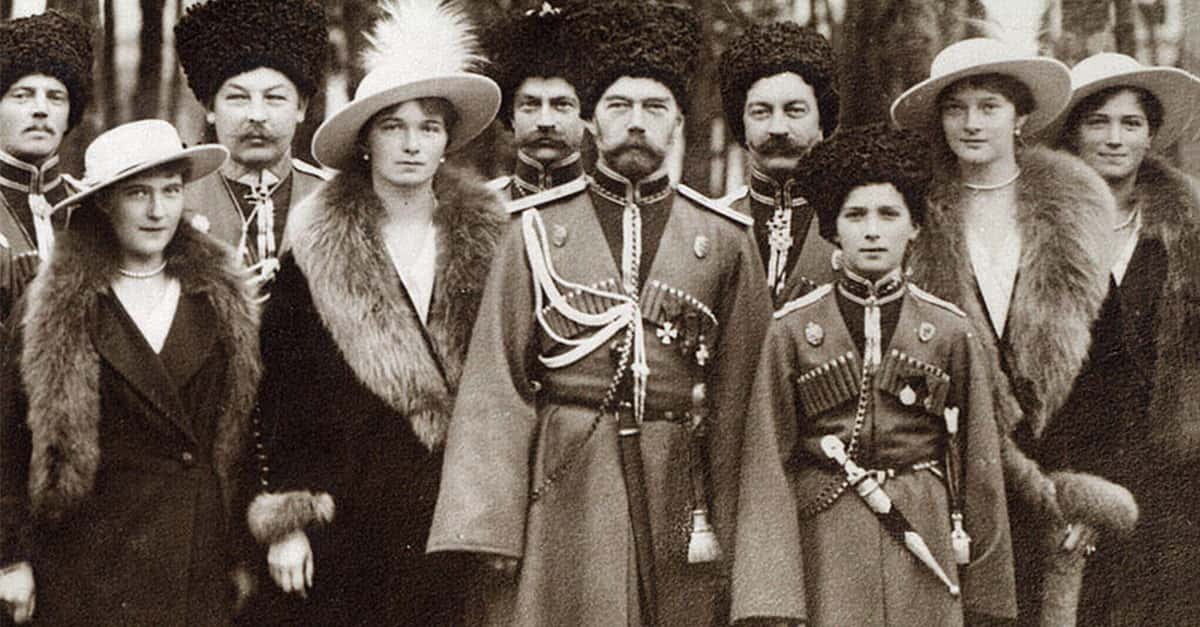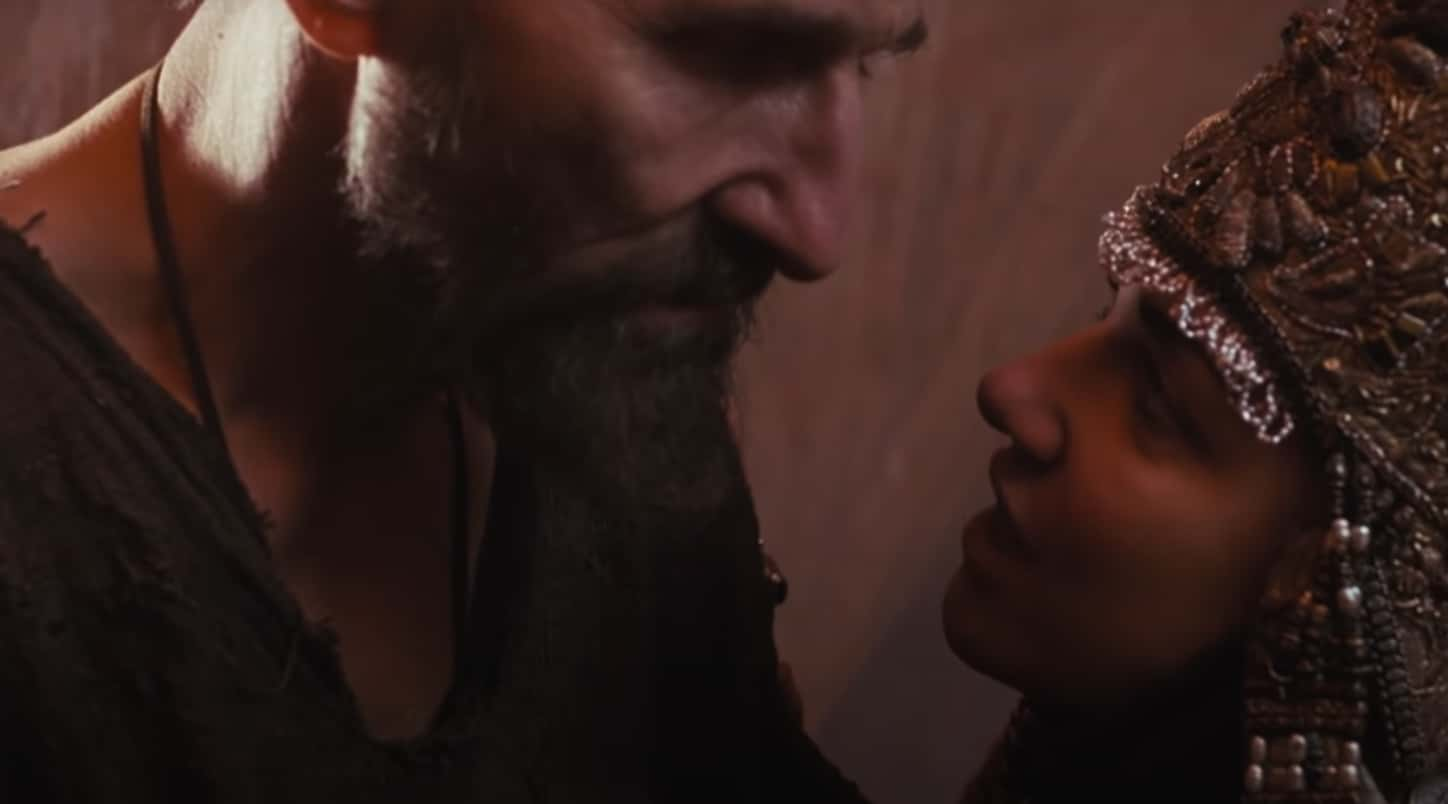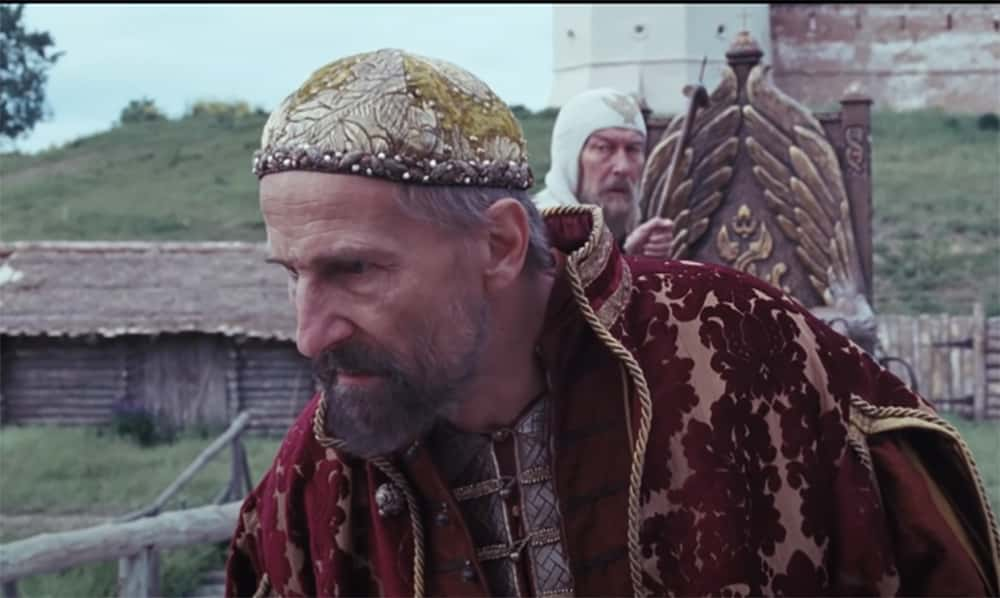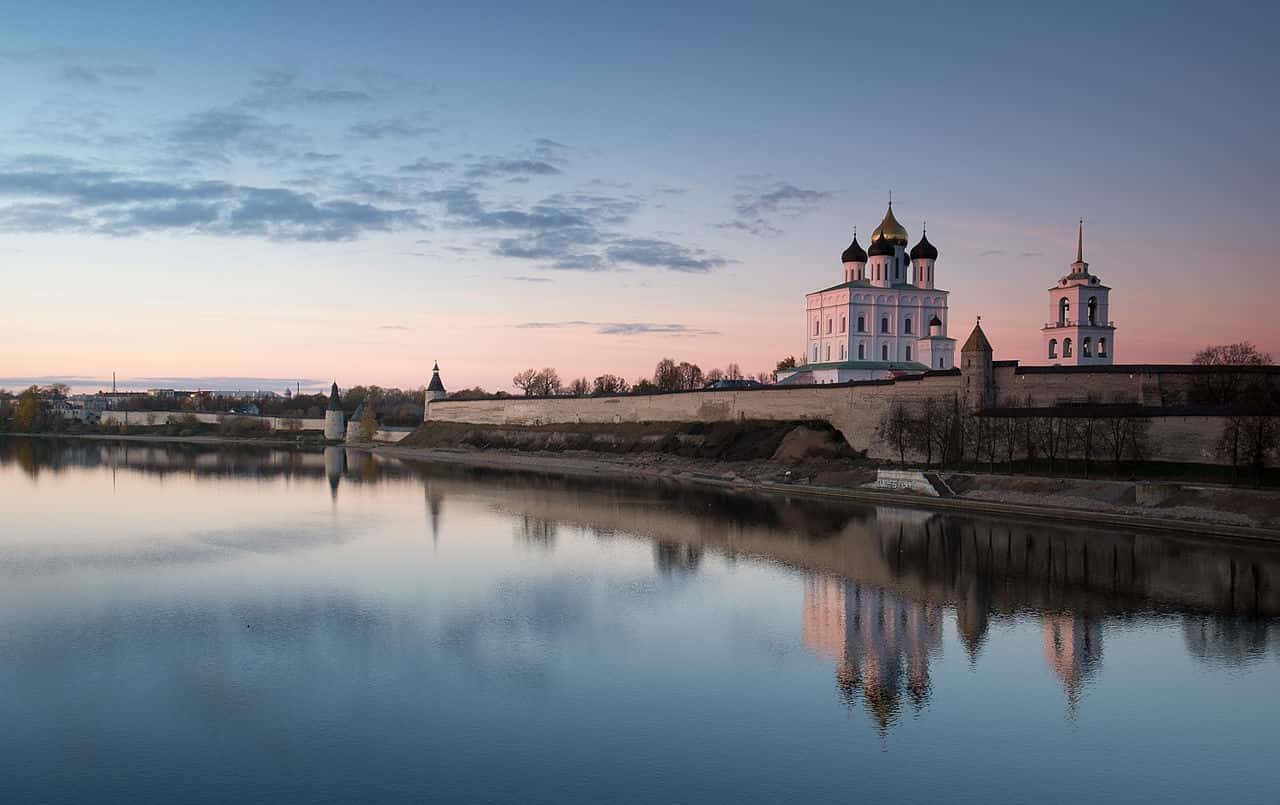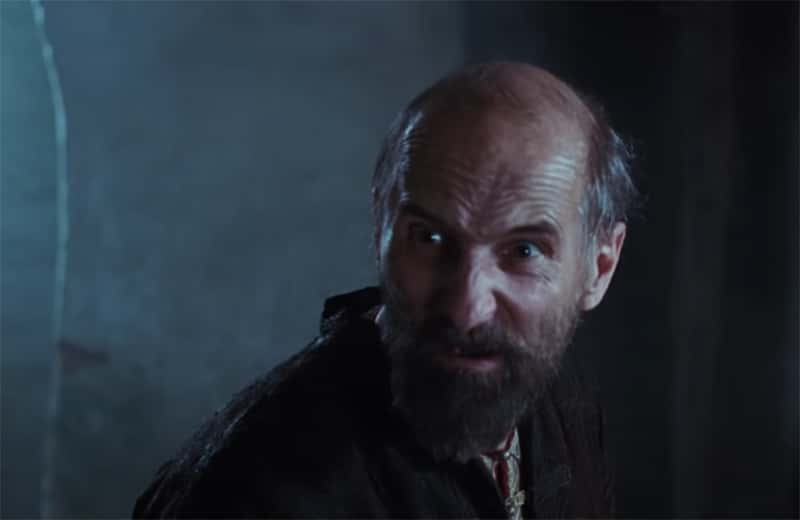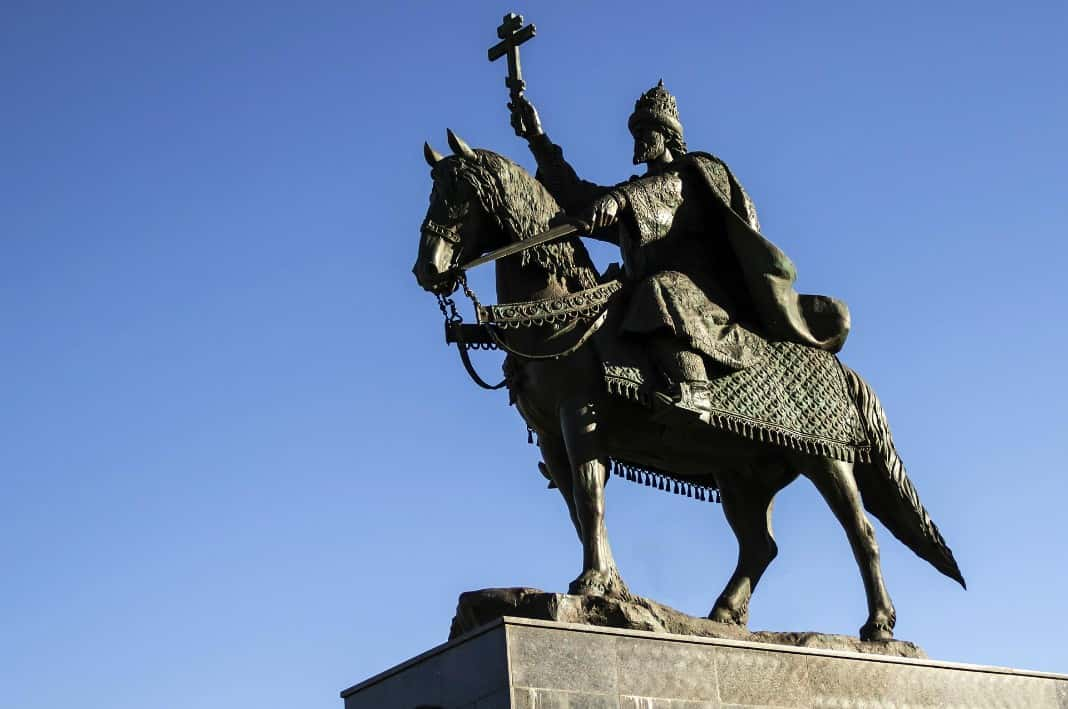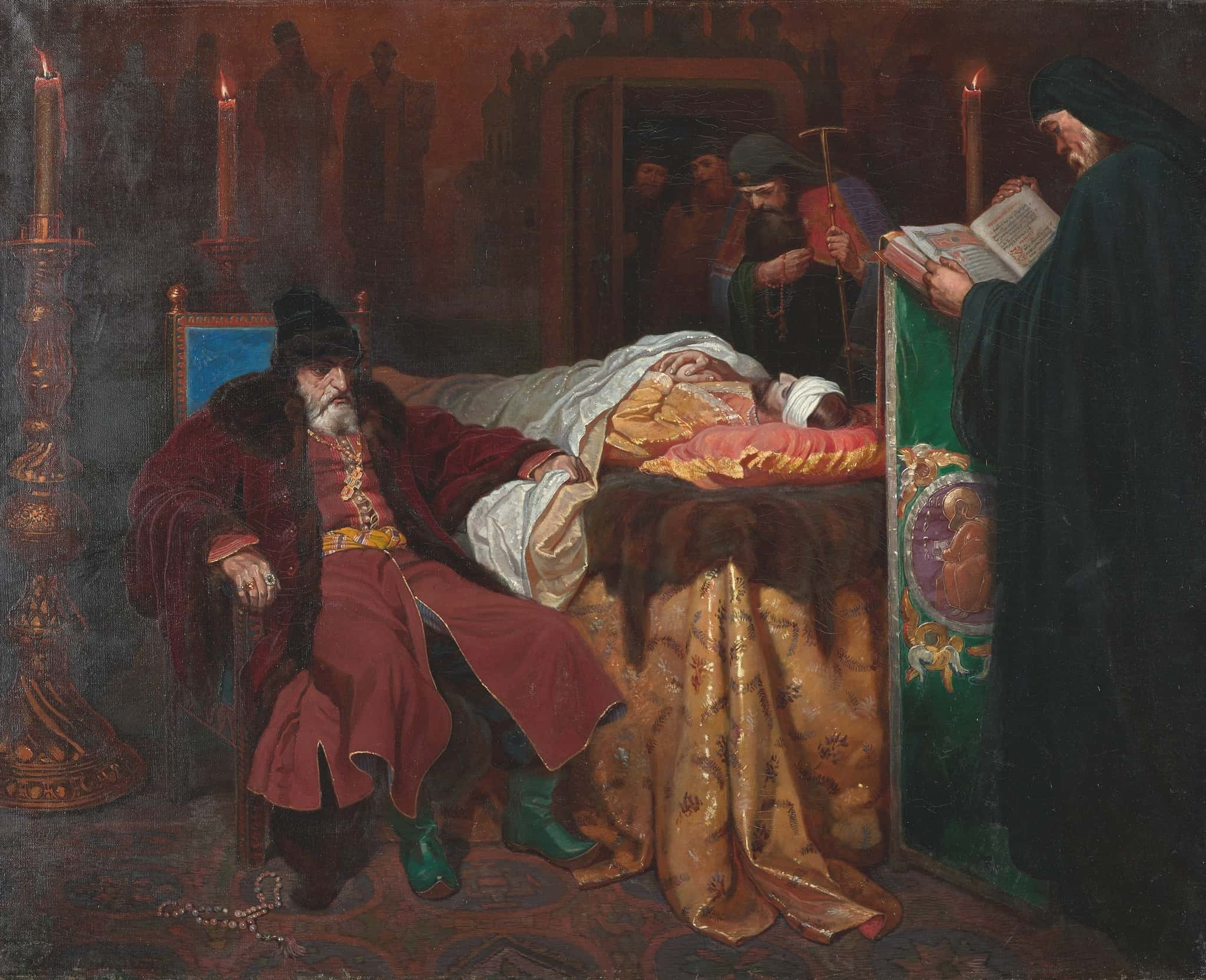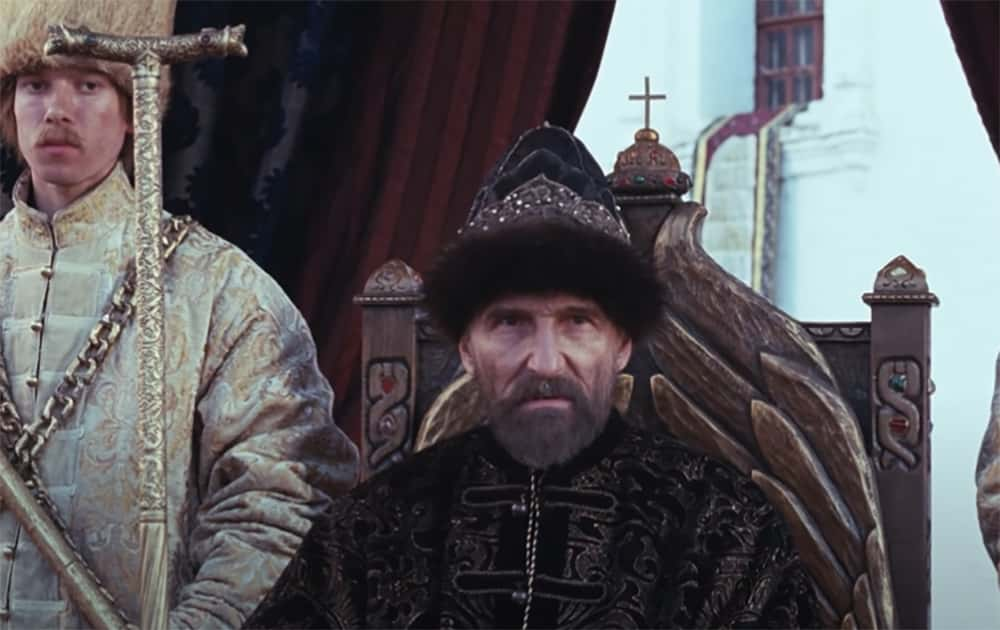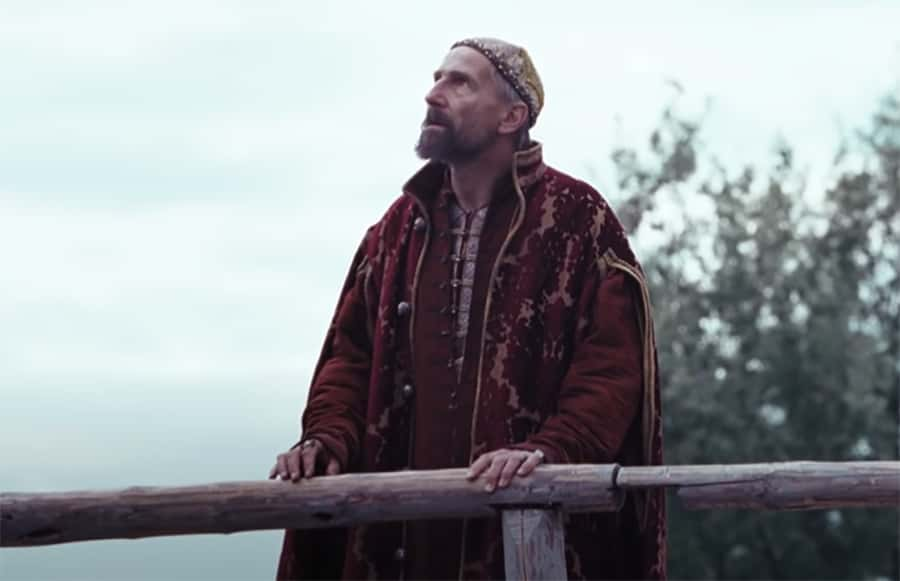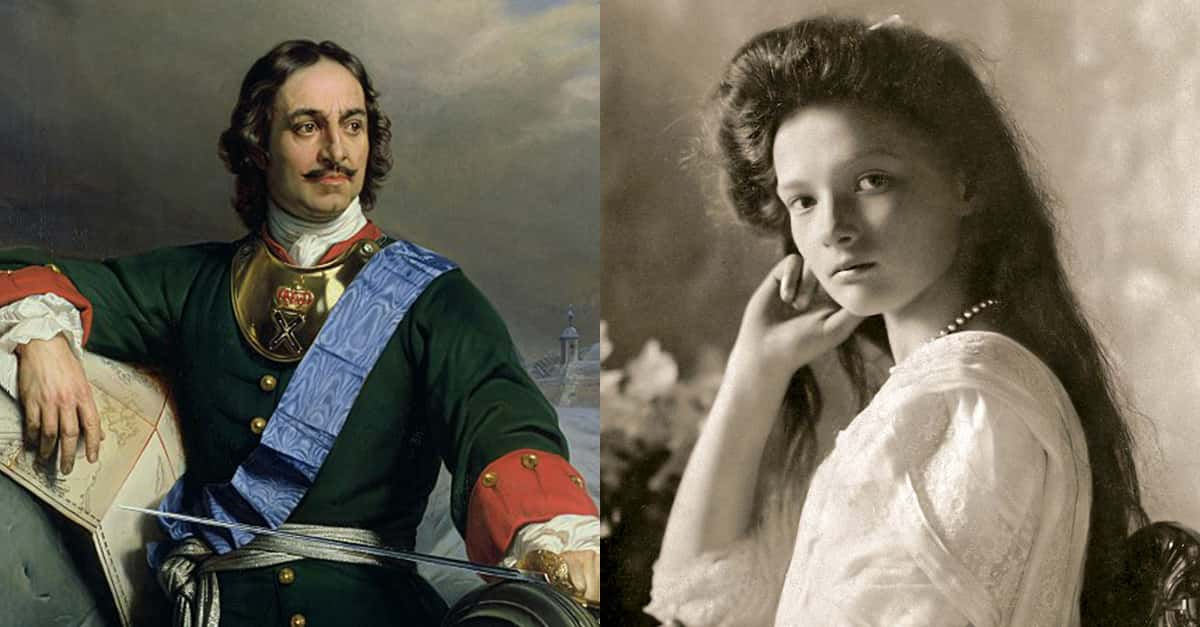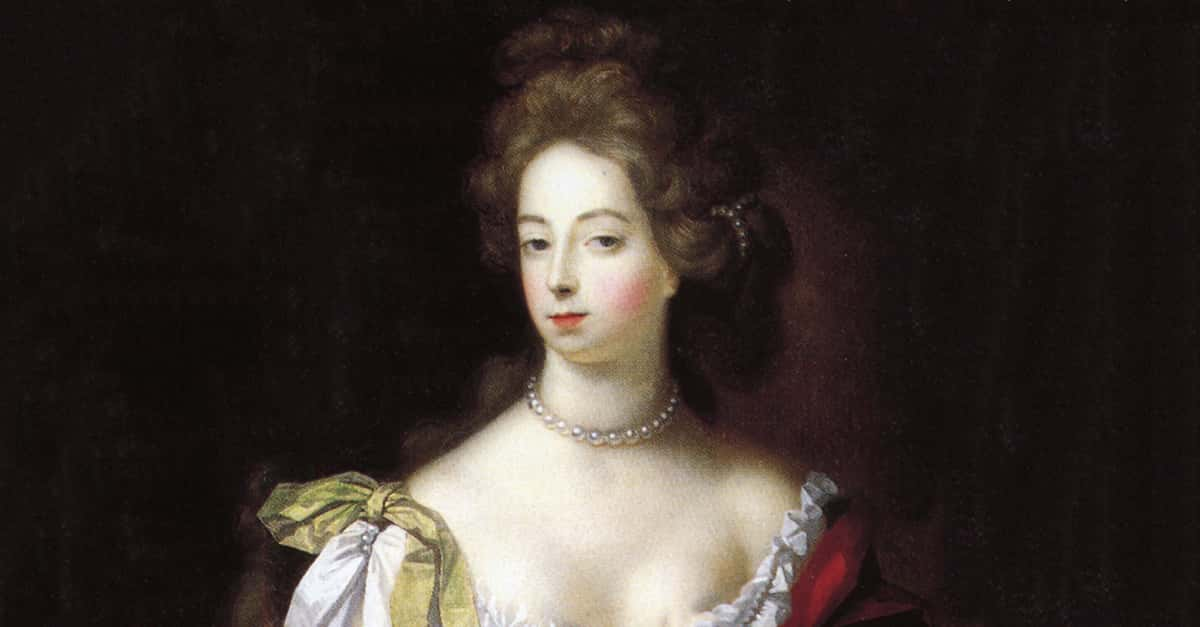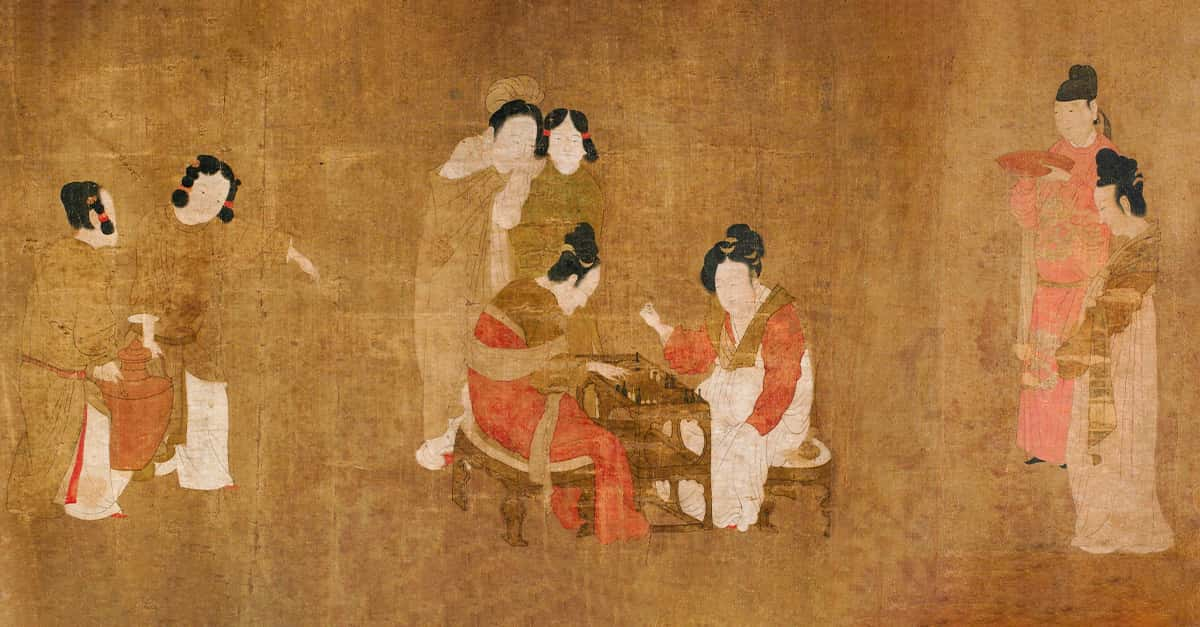"Terrible" doesn't even begin to describe Ivan III, the mad tyrant of Russia. From his tragic childhood to his reign of terror to his failed legacy, Ivan the Terrible was one of the most disturbing monarchs in history. Wielding completely unchecked power, Ivan brought Russia to the brink of ruin—but that doesn't even scratch the surface of just how bad things got. Read on and find out how this infamous Tsar got his dark nickname.
Ivan the Terrible Facts
1. His Father Was...Adequate
The apple fell far from the tree with Ivan the Terrible. His father was Grand Prince Vasili III, also known as Vasili the...Adequate. Compared to his tempestuous son, Vasili's reign was relatively uneventful—but that doesn't mean his time on the throne was completely void of scandal...
2. Before He Was Born, His Dad Had a Major Problem
By all accounts, Vasili seemed to care for his first wife, but the two of them had a major problem. The couple had been married for 20 years, yet had never managed to conceive a child. By this point, Vasili was 47 and well into his middle age, and the lack of an heir started to make the boyars (Russian aristocrats) restless. According to rumors, Vasili and his wife grew desperate—and they went to dark lengths to produce an heir.
3. Vasili's First Wife Did Everything She Could...
To her credit, Vasili's wife did everything in her power to try and solve their fertility woes. She went on distant pilgrimages to holy sites, and when that failed, she even consulted strange sorcerers to try and find a magical solution. Unfortunately, magic didn't work any better then than it does now, and she remained barren. Finally, her time was up.
4. Where Do You Think Ivan Got it From?
At the urging of the boyars, Vasili dropped his wife of two decades like a bag of hammers and married a woman named Elena Glinskaya, Ivan the Terrible's mother. But this wasn't exactly a fairy-tale romance: Elena was a full 31 years younger than Vasili. He picked her because she was young and beautiful—but what he didn't realize was that he'd invited a viper into the Russian court.
5. Cradle Robber
Ironically, because it was the boyars who forced Vasili to take a new wife, most of the aristocrats absolutely hated the new Princess due to her Catholic upbringing. But Vasili adored his young wife, and even started trying to look younger around her (though I doubt that made anyone forget the three decades between them). However, even if they were happy, early signs indicated that this relationship was just as doomed as the last one...
6. If Only They Knew...
Though Vasili eagerly consummated his new marriage, Elena failed to get pregnant. In fact, Vasili and Elena remained childless for the first several years of their union. Now, it seemed like the Grand Prince was right back where he started: heading for disaster. Then, in 1530, his salvation arrived in the form of a son. He named the boy Ivan. It was only after that boy grew into a man that he earned the rest of his name.
7. His Father Died When He Was Just a Child
Vasili didn't get to enjoy fatherhood for long. Just three years after Ivan's birth, Vasili was out hunting when he suddenly felt a searing pain in his side. He'd developed a painful abscess in his hip. His doctors did everything they could to save him, but 16th-century medicine was...less than ideal. Despite their efforts, the Grand Prince's infection soon spread—his end was close.
8. Deathbed Conversion
Knowing that death approached, Vasili endured a long and painful trip back to Moscow so that he could be buried there. And, in a strange twist, he asked to be made a monk in his final days. He drew his last breath in 1533, and his son Ivan was set to become the next Grand Prince of Moscow. Except there was one teensy little problem...
9. The Cersei Lannister of Russia
Ivan IV was just three years old when his father died. Not exactly Grand Prince material. So, while he grew up, his mother Elena effectively became the ruler of Russia. The boyars likely assumed that with the Princess on the throne, they would be free to run amok and do as they wished—but if they didn't know what kind of woman Elena Glinskaya was yet, they were about to learn the hard way.
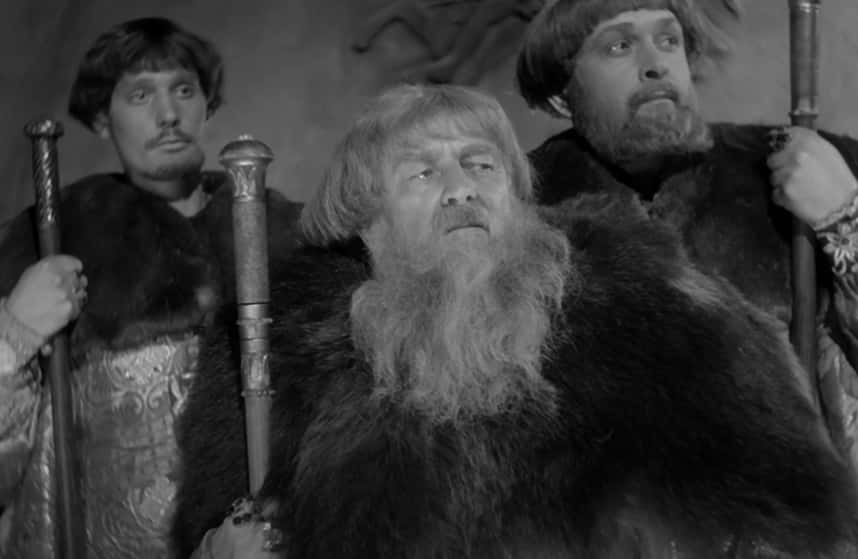 Ivan the Terrible, Part I (1944), Mosfilm
Ivan the Terrible, Part I (1944), Mosfilm

History's most fascinating stories and darkest secrets, delivered to your inbox daily.
10. She Showed Them Who was Boss
As soon as her husband was in the ground, Princess Elena set about strengthening her hold on Russia until her son came of age. Unimpressed with the infant Ivan, both of Vasili's brothers made claims to the throne, but Elena stopped them in their tracks. She had both of them thrown in jail, where they had plenty of time to think about who the real ruler of Russia was. But her brothers-in-law were just the start of her problems.
11. Playing Favorites
Elena quickly made enemies in the Russian court, in part because she liked to play favorites—specifically with a rather handsome young boyar. People quickly began to think that Elena and her boyar boy-toy were a little more than "allies." Ivan's mother had to be constantly on her toes to keep her hold on the country. And, to make things even worse, even her own family was up to no good.
12. Apparently, She Didn't Like Mike
Ivan's uncle Michael Glinski had a...complicated relationship with the Russian throne. Long before Vasili had even married Elena, Michael was caught up in a plan to betray the Grand Prince. Let's just say that Vasili was not impressed. He threw Michael in prison to rot for 12 years. However, his saving grace came after his dear sister married his imprisoner. Elena convinced Vasili to free her brother, and the Grand Prince even appointed Michael to look after his son Ivan.
However, once Vasili died, Michael betrayed his sister's trust—and paid a horrific price for it.
13. She Made Her Own Brother Starve to Death
While Ivan was a young boy and Elena was regent, Michael took advantage of his blood and gained a tremendous amount of influence at court—a little too much, in fact. Michael's political maneuvering made Elena nervous. If given enough time, he might even have taken the throne for himself! Elena was determined to see her son take his rightful place as ruler of Russia, so she coldly did what she had to do.
She had her own brother thrown in prison once again, and this time, his stay was even worse. Soon after the bars shut behind him, Michael Glinsky died of starvation.
14. The Orphan Prince
Though she did everything in her power to ensure that her son Ivan could take Russia's throne, Princess Elena never lived to see it. She died suddenly in 1538 at just 28 years old. Now sure, this was the 16th-century, and people died young all the time—but still, as soon as Elena passed, dark rumors began to swirl around the Russian court.
15. Was it Poison?
Accusations of poison ran wild after Elena's death. In fact, authorities arrested Ivan's own governess for that reason. Though no one was able to prove that the Princess had been poisoned, several different groups were connected to a potential plot on her life. True, accusations like this were a dime a dozen around the time just about any European ruler died, but there was likely some truth to these rumors.
16. It was Probably Poison
Centuries after her death, researchers dug up Elena's remains and tested them. The results seemed to indicate that she had indeed been poisoned. We may never know who did the deed, but one thing was for sure: Both of Ivan IV's parents were dead, and he was now alone in the snake pit.
17. He Knew How to Hold a Grudge
Ivan was still technically ruler of Russia, but at just eight years old, he wasn't all that Terrible yet. After Elena's death, all of the most prominent boyar families began vying for control of the country. In all of their backstabbing and infighting, young Ivan was left by the wayside. He would later write that he and his younger brother were treated little better than peasants. They often went hungry and had to wear old, shabby clothing.
His childhood mistreatment gave Ivan a lifelong hatred of the boyars—and when he came of age, they would come to regret ever crossing him.
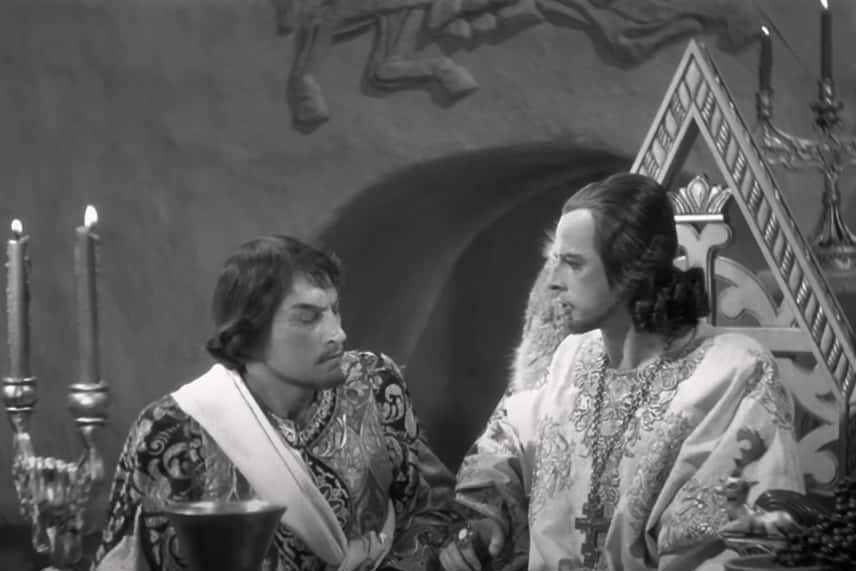 Ivan the Terrible, Part I (1944), Mosfilm
Ivan the Terrible, Part I (1944), Mosfilm
18. A New Caesar
Finally, when he was 16 years old, Ivan donned Monomakh's Cap and took his place as the rightful ruler of Russia. From the very beginning, Ivan was determined to put more of a stamp on Russia than his father had. While Vasili was merely the Grand Prince of Moscow, Ivan had himself crowned as "Tsar of All the Russias." His reign would see the Tsardom come to completely dominate Russian affairs—and the nation would tremble from the consequences.
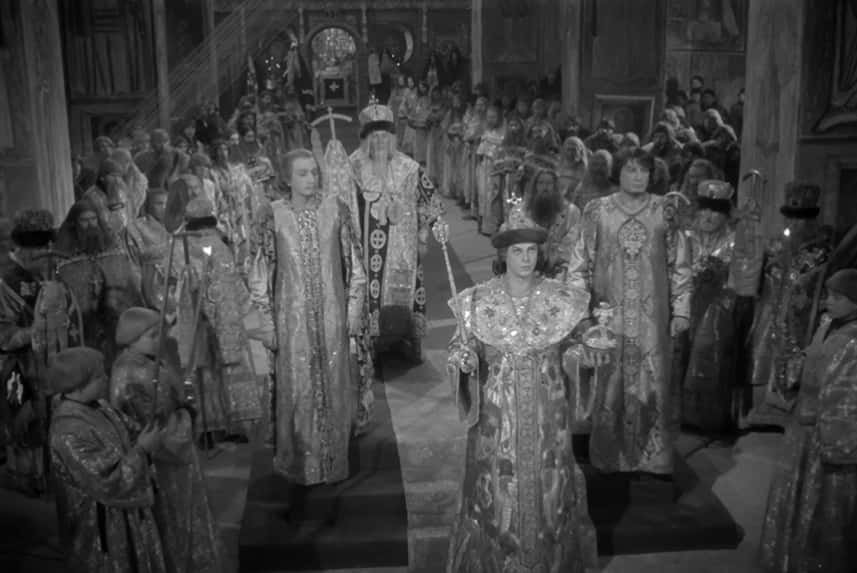 Ivan the Terrible, Part I (1944), Mosfilm
Ivan the Terrible, Part I (1944), Mosfilm
19. Will You Accept This Rose?
Ivan was now Tsar, but he needed a Tsaritsa. He sent out invitations to prominent noble families all across Russia: Send your eligible daughters to Moscow, and if you're really lucky, the Tsar might just select her to be his wife. Allegedly, up to 1,500 girls showed up at the Tsar's doorstep, but out of all of them, he chose just one. Two weeks after his coronation, Ivan married Anastasia Romanovna, the first Tsaritsa.
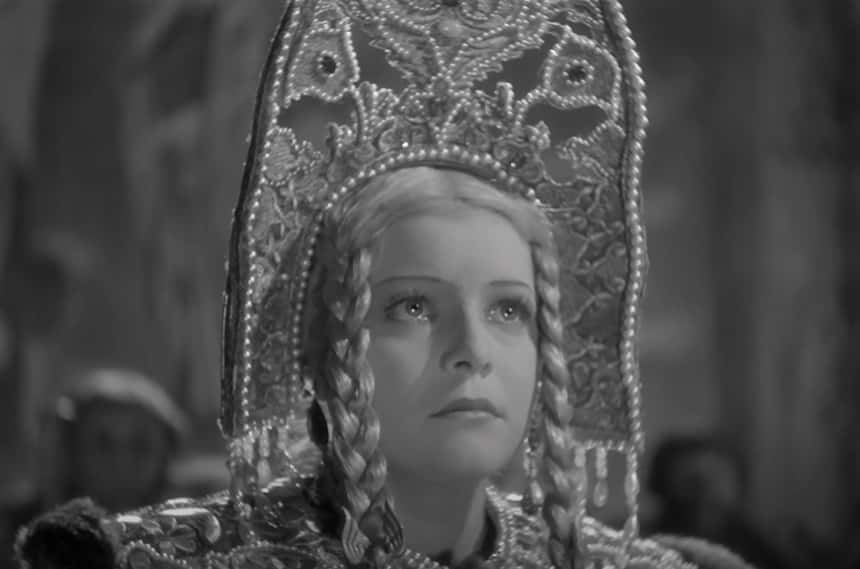 Ivan the Terrible, Part I (1944), Mosfilm
Ivan the Terrible, Part I (1944), Mosfilm
20. Behind Every Great Man...
By all accounts, Ivan chose his wife well. Though he was a volatile personality from the beginning, Anastasia seemed to have a calming effect on him. One writer even implied that the intelligent and driven Tsaritsa was the real power before the throne. But while Ivan and Anastasia seemed to genuinely care for one another, their marital bliss was quickly shattered by tragedy.
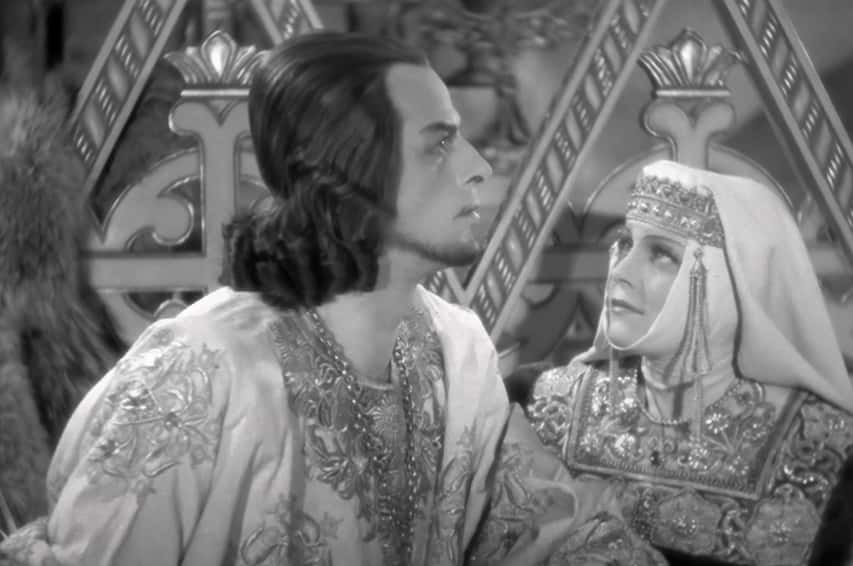 Ivan the Terrible, Part I (1944), Mosfilm
Ivan the Terrible, Part I (1944), Mosfilm
21. Heartbreak after Heartbreak
Anastasia gave birth to two daughters in the early years of their marriage, but both of their young girls died in infancy. The couple was devastated, but they kept at it, and soon, Anastasia bore Ivan a healthy son. They named to boy Dmitri, and the nation rejoiced: The Tsar had an heir. Dmitri wasn't sickly like the two sisters who predeceased him—but that only made his death all the more devastating.
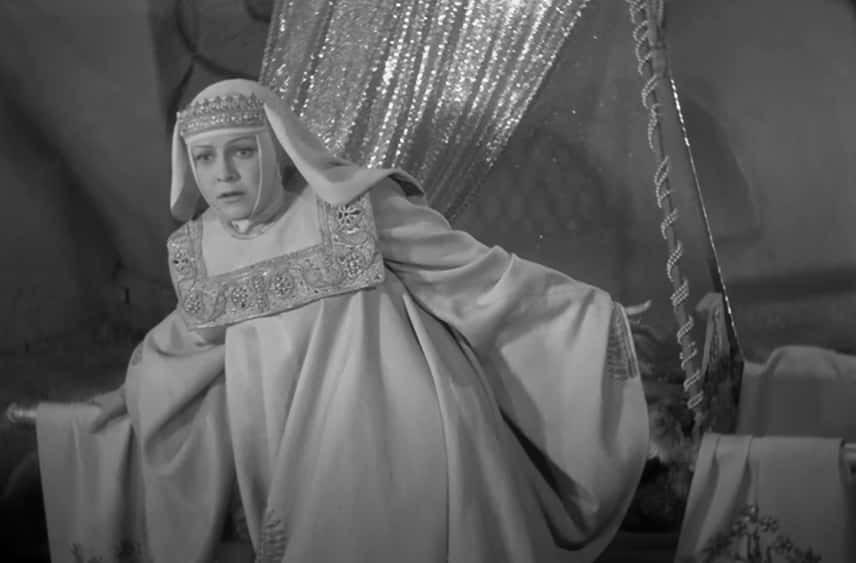 Ivan the Terrible, Part I (1944), Mosfilm
Ivan the Terrible, Part I (1944), Mosfilm
22. A Terrible Idea—With Terrible Consequences
Illness claimed Ivan's first two children, but what made his son's death so painful was that it seemed so senseless. Less than a year after Dmitri was born, Ivan suddenly told his young family that he was taking them on a pilgrimage...to a monastery hundreds of miles away. Allegedly, an advisor told Ivan that bringing a one-year-old child on a mostly pointless 1,000-mile journey was probably not a great idea.
Did Ivan listen? Of course not. Should he have? Well...
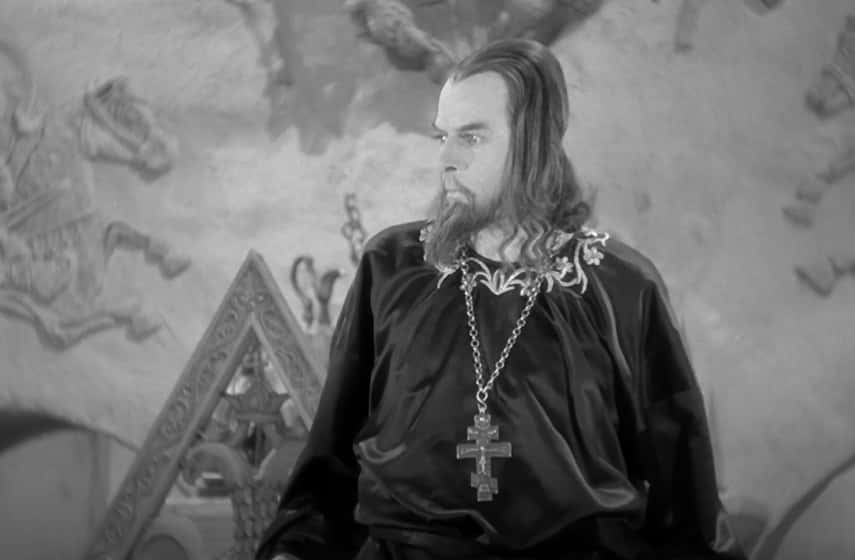 Ivan the Terrible, Part I (1944), Mosfilm
Ivan the Terrible, Part I (1944), Mosfilm
23. Another Child Lost...
While the Tsar and his family were sailing north on a river, a sudden wave struck their boat, overturning it. In the chaos, young Dmitri's wetnurse dropped him into the swirling water. All of the adults survived the wreck—but by the time they got to the child, it was too late. Tsarevich Dmitri was just eight months old when he died, and the Tsar and Tsarina were left to mourn a child once again.
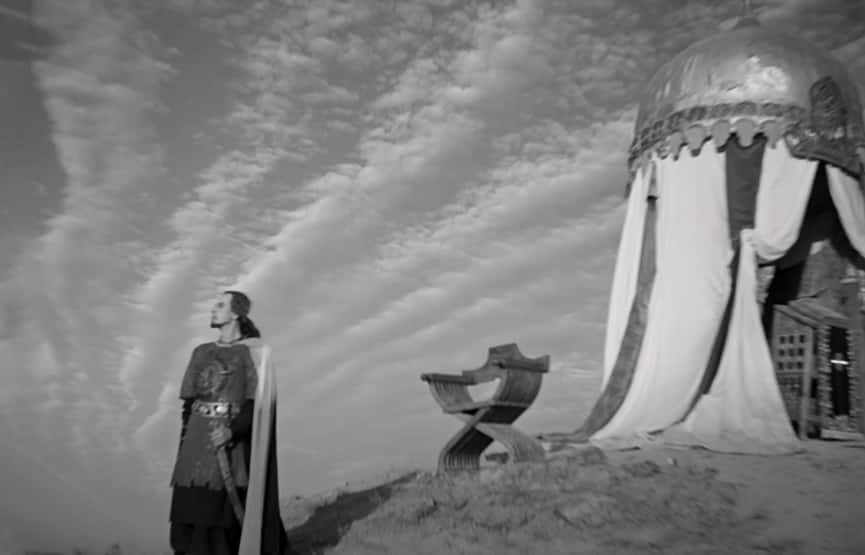 Ivan the Terrible, Part I (1944), Mosfilm
Ivan the Terrible, Part I (1944), Mosfilm
24. The First Son to Live—But For How Long?
One year after Dmitri's tragic loss, Anastasia gave birth to another son. This one, she named after his father: Tsesarevich Ivan Ivanovich. I can only imagine the young parents were absolutely obsessed with the boy's safety, because this time, young Ivan managed to grow into a daring, intelligent young man. He accompanied his father to war, and once, he even saved the Tsar's life.
But one way or another, the new Tsesarevich was his father's son, and being Ivan the Terrible's kid was hazardous to your health. It would come much, much later, Ivan Ivanovich met the most brutal end of all—but that story comes later.
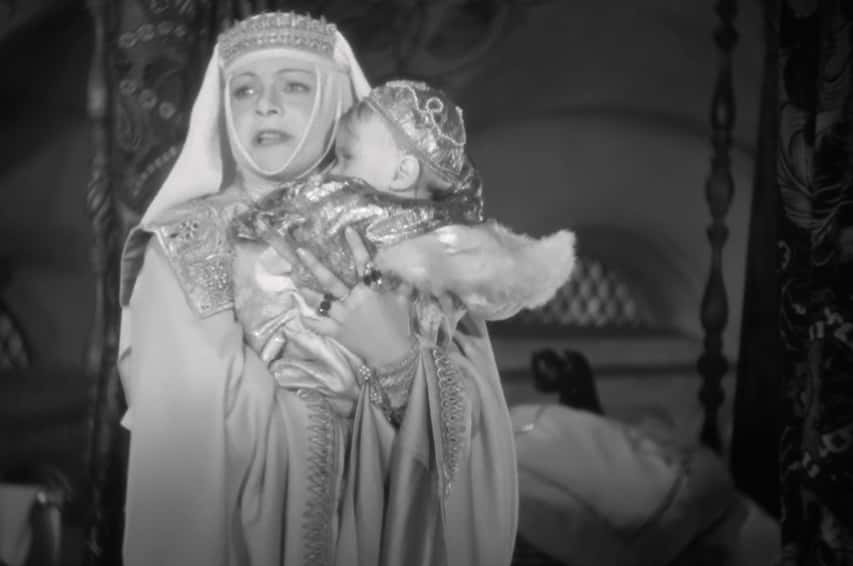 Ivan the Terrible, Part I (1944), Mosfilm
Ivan the Terrible, Part I (1944), Mosfilm
25. A Villainous Face
If you look at most of the portraits of Ivan the Terrible, he looks like a villain out of a horror movie. While the paintings are effective, they probably aren't exactly true-to-life. Almost all of his surviving portraits were painted long after his death. However, maybe they weren't too far off. One chronicler called Ivan tall, broad, and athletic...with an "unpleasant" face and a long, crooked nose.
26. A Powder Keg
Ivan's reign got off to a pretty, well, terrible start. The year of his coronation also saw the Great Fire of Moscow, where the crown jewel of Russia almost entirely burned to the ground. Before the blaze, Moscow was mostly made out of wood. The military also kept massive stores of gunpowder inside the Kremlin, in the middle of the city. Moscow was, quite literally, a ticking time bomb, and it was only a matter of time before it went off.
27. He Watched Moscow Burn...From a Safe Distance, of Course
By the time the Great Fire of Moscow faded, nearly 4,000 people had perished. A further 80,000 were left without homes, and the city's economy took a major hit. And where was the new Tsar of All the Russias as his capitol burned? He was nice and safe, miles away from the city. A horrific fire seems like a pretty bad start to Ivan's rule—but don't worry. It was going to get much, much worse.
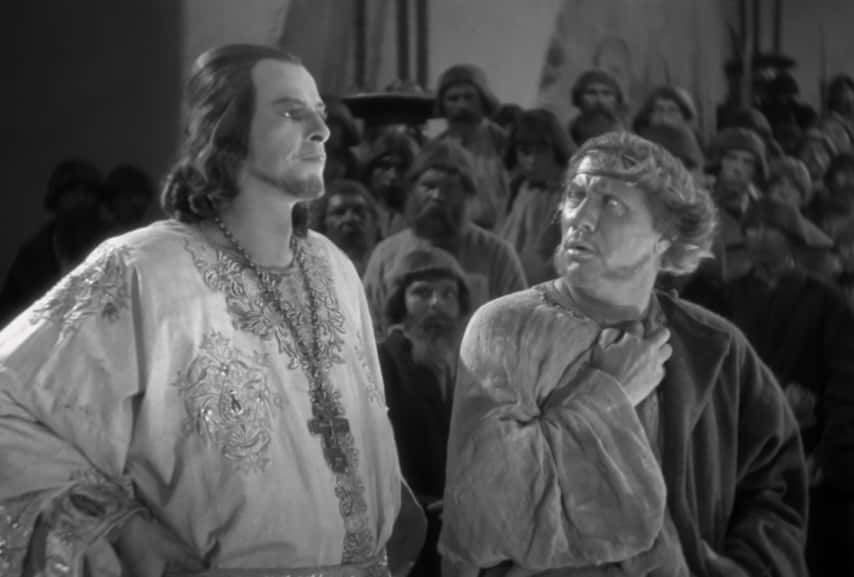 Ivan the Terrible, Part I (1944), Mosfilm
Ivan the Terrible, Part I (1944), Mosfilm
28. He Found Himself on Death's Door
To make a bad situation worse, Ivan suddenly grew extremely sick early in his reign. His condition quickly deteriorated, and it looked like another succession crisis was on the horizon. The Tsarevich was still an infant, and the boyars didn't love the idea of having a boy-Tsar again so quickly. The boyars made plans to have Ivan's cousin Vladimir take the throne in case the Tsar never recovered, and that was looking more and more likely.
However, to everyone's shock, Ivan suddenly got better. But when the boyars greeted the recovered Tsar, they found a whole new man in front of them—a man who was much more disturbed than he had once been.
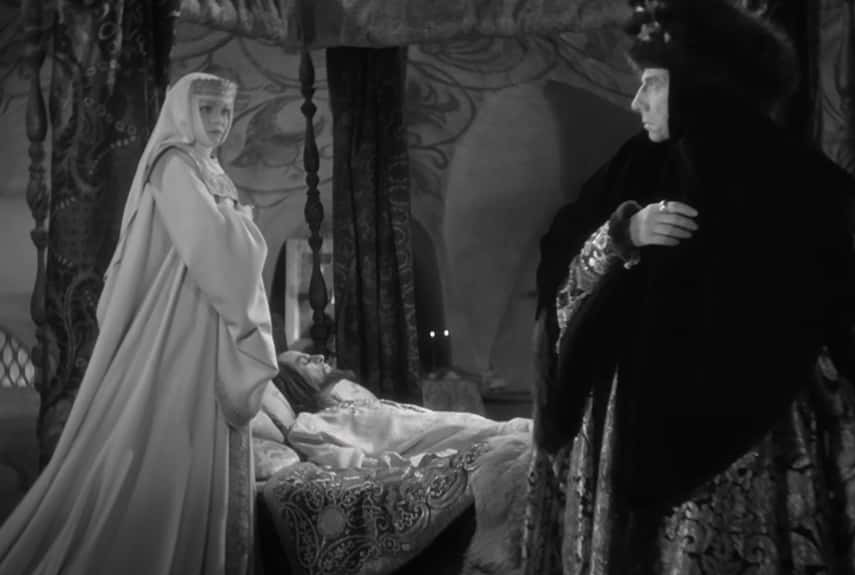 Ivan the Terrible, Part I (1944), Mosfilm
Ivan the Terrible, Part I (1944), Mosfilm
29. He Wanted War—and Boy, Did He Get It
The new and not-so-improved Ivan was even more brash and impulsive than he'd been before—and this very quickly brought him to war. Desperate to gain access to the Baltic Sea and the important trade routes that come along with it, Ivan embarked on the Livonian War against Sweden...and Lithuania...and Poland...and the Teutonic Knights. This war would last for decades and nearly bankrupt Russia—but Ivan was just getting started.
30. Things Fall Apart
If the Great Fire of Moscow was Ivan's reign started on the wrong foot, the following years saw it fall flat on its face. The Livonian War was going badly, droughts had led to widespread famine across the country, and Ivan still hadn't managed to get access to the Baltic Sea. It seemed like absolutely nothing was going his way—but just when it seemed like things couldn't get any worse, Ivan was hit with the most heartbreaking loss yet.
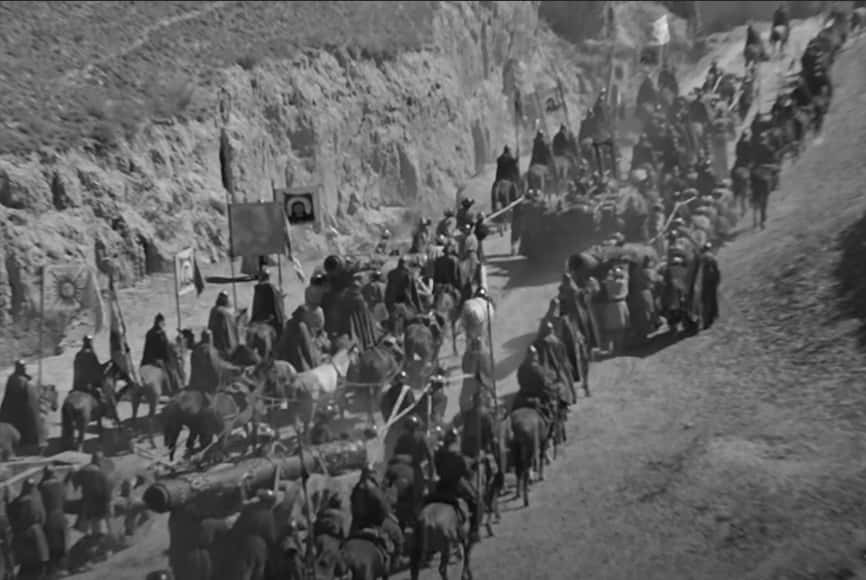 Ivan the Terrible, Part I (1944), Mosfilm
Ivan the Terrible, Part I (1944), Mosfilm
31. His Beloved Wife was Taken From Him
Ivan's beloved wife Anastasia had been in poor health for years, but in 1560, she fell ill for the last time. She passed away that summer. To put it bluntly, her death left Ivan...broken. His mental health had already been frayed from his own illness, but at least he had Anastasia around to keep him in check. With her gone, he had a complete emotional breakdown.
He had been a questionable ruler before, but after the loss of his wife, Ivan finally began to earn his nickname.
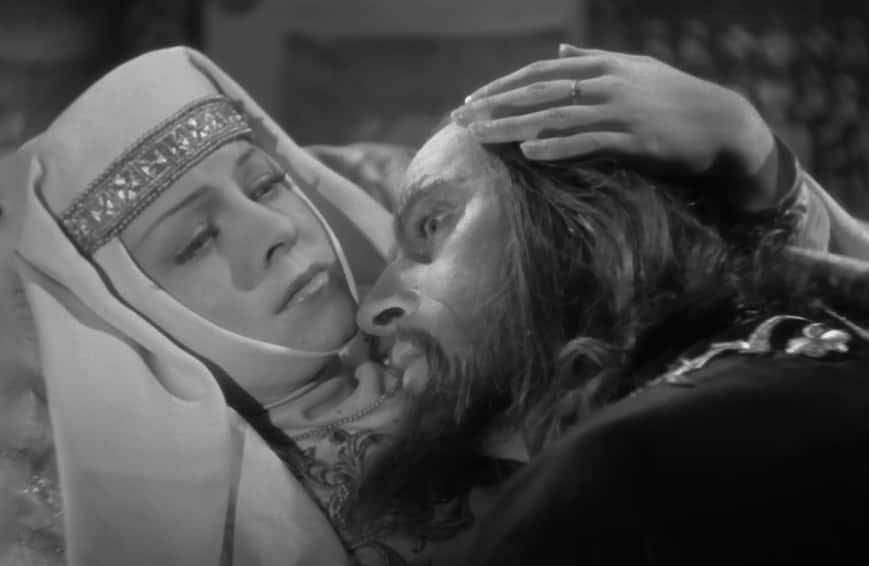 Ivan the Terrible, Part I (1944), Mosfilm
Ivan the Terrible, Part I (1944), Mosfilm
32. The Paranoia Sets In
In his mad grief, Ivan became convinced that the boyars had poisoned his wife. The same boyars who had left him fending for himself as a young boy. The same boyars who he'd hated for almost his entire life. No one could find any evidence that Anastasia had died of poison, but there was no changing Ivan's mind. Seemingly with little rhyme or reason, he had several boyars captured, questioned, and executed.
It seemed like Ivan had truly gone mad in his grief—but there may actually have been some truth behind his paranoia.
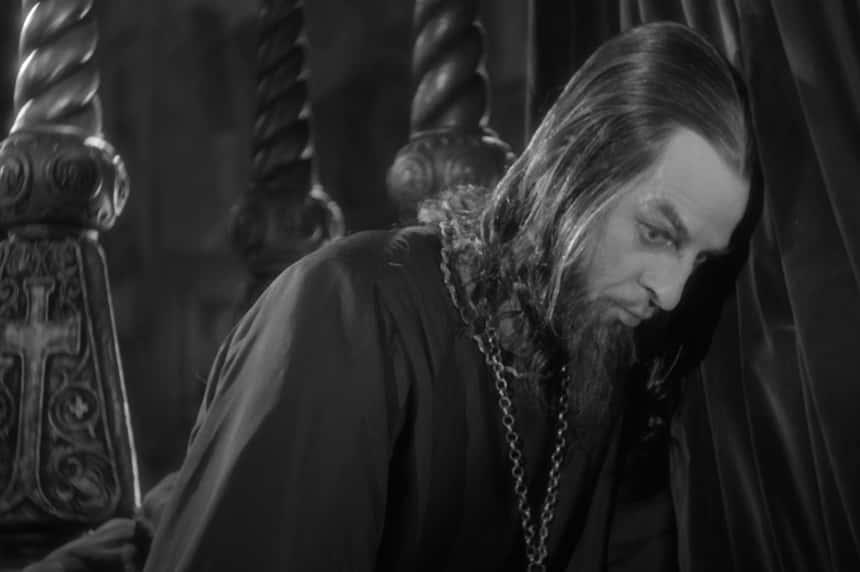 Ivan the Terrible, Part I (1944), Mosfilm
Ivan the Terrible, Part I (1944), Mosfilm
33. Not The First Woman in His Life to be Poisoned—and Not the Last
As with Ivan's mother, archaeologists uncovered Anastasia's remains centuries later and tested them for the cause of death. Once again, the bones revealed indications of poison. In Anastasia's case, scientists found far higher levels of mercury in her remains than they expected. With this evidence, it's generally agreed that the Tsaritsa did indeed die of poison.
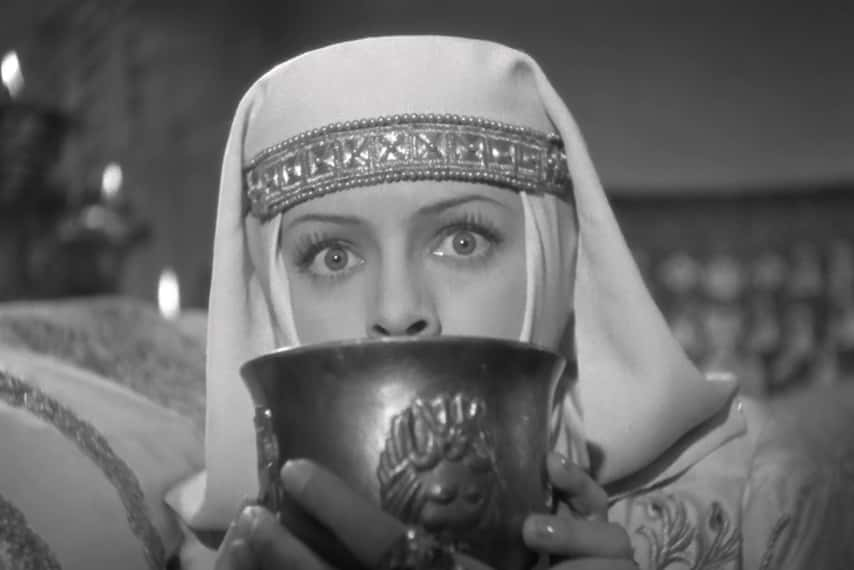 Ivan the Terrible, Part I (1944), Mosfilm
Ivan the Terrible, Part I (1944), Mosfilm
34. The Fakeout to End All Fakeouts
Without his beloved wife to keep him contained, Ivan truly descended into tyranny. But in a bizarre twist, he began his reign of terror by...abdicating his crown? That's right, a few years after his wife died, Ivan suddenly left Moscow. Next, he sent letters to the Kremlin announcing that he planned to give up his throne. He claimed that the treasonous boyars were stealing his money, and so he was no longer able to rule.
This seems like the craziest plan in the history of crazy plans—but what happened next was even more unbelievable.
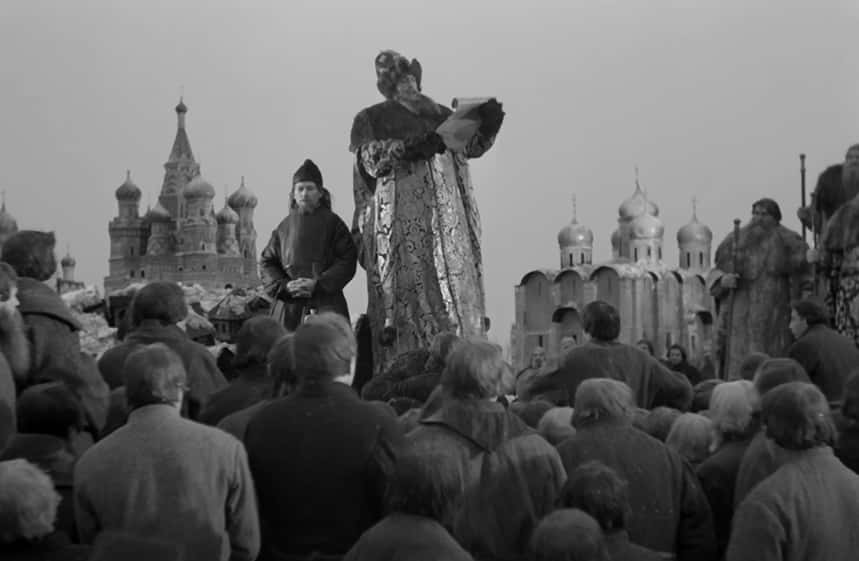 Ivan the Terrible, Part I (1944), Mosfilm
Ivan the Terrible, Part I (1944), Mosfilm
35. The Worst Was Yet to Come
Despite his abdication letter, Ivan had no intention of giving up his power. However, he knew that the people of Moscow were on his side, and that the boyars would be completely helpless without him. I can only imagine the smug satisfaction on his face when an envoy from the boyars came crawling to his feet, begging for Ivan to come back. If they had known what he would do upon his return, maybe the boyars would have thought twice...
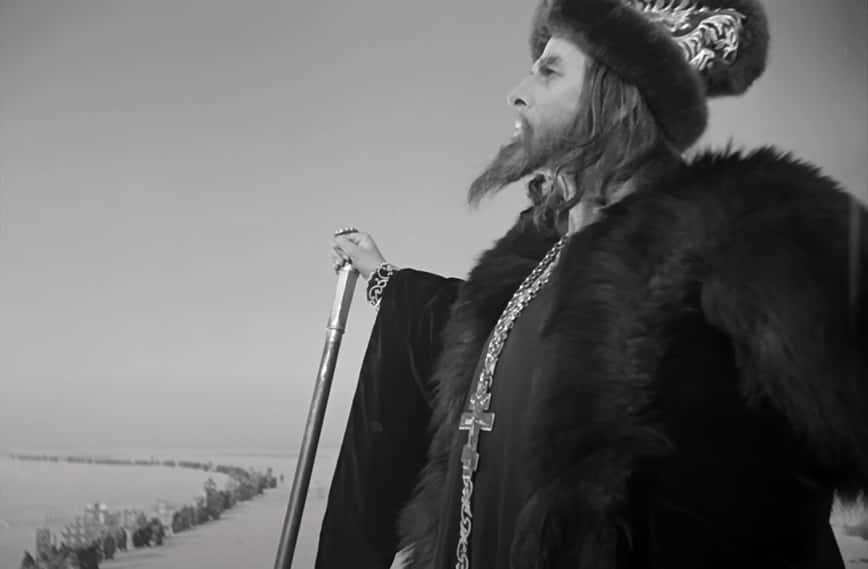 Ivan the Terrible, Part I (1944), Mosfilm
Ivan the Terrible, Part I (1944), Mosfilm
36. Absolute Power Corrupts, Absolutely
Ivan agreed to return to Moscow and take back the position of Tsar—but at a huge cost. He forced the boyars to grand him absolute power. He demanded that he be granted the ability to imprison traitors, execute them, and take all of their possessions for himself. And who decided who was a traitor? Well, Ivan of course. The boyars were out of options, so they agreed to all of Ivan's demands—creating a monster in the process.
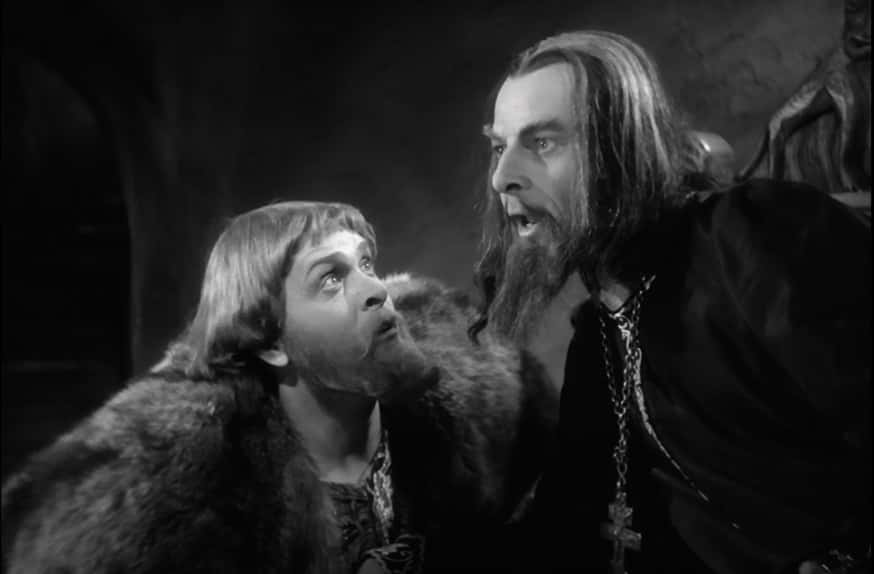 Ivan the Terrible, Part I (1944), Mosfilm
Ivan the Terrible, Part I (1944), Mosfilm
37. The Dark Times Begin
Ivan the Terrible now had more power than any Russian monarch had possessed before—but he was just getting started. One of his first decrees after returning was the creation of the oprichnina. Soon, nearly every soul in Russia would learn to fear that name.
38. What Mad Tyrant Would Be Complete Without His Secret Police?
The oprichnina was a territory in Russia where Ivan had absolute control over every facet of life. But that wasn't nearly the worst part of the decree. To maintain order in this new world, Ivan created the oprichniki—his black-clad secret police. Ivan pulled men from every corner of Russian society and gave them everything they ever wanted: money, power, you name it. This made the oprichniki intensely devoted to the Tsar.
It also ensured they didn't bat an eye when he began ordering them to commit some of the worst atrocities in Russian history.
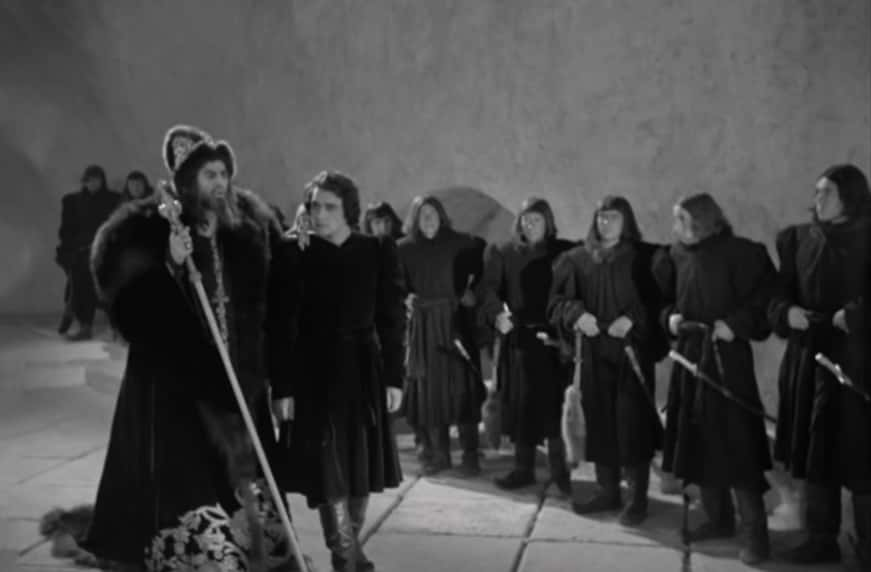 Ivan the Terrible, Part II (1958), Mosfilm
Ivan the Terrible, Part II (1958), Mosfilm
39. The Purge
Ivan was still reeling from the death of his wife—and now he had a pack of rabid dogs to do his bidding for him. Not long after he founded the oprichniki, Ivan instituted a brutal purge of Russia's noble clans. Under vague accusations of conspiracy, the oprichniki rounded up thousands of boyars. A tiny fraction of them bowed to Ivan and became oprichniks themselves. The rest were not so lucky.
Some were forced to become monks, some were exiled out of Russia, and many were executed without trial. And Ivan was just getting started.
40. He Managed to Make Life Worse for His Poorest Subjects
To keep the oprichniki happy, Ivan gave them massive estates in his now ever-increasing oprichnina. And if you think that the members of Ivan's brutal secret police would make bad landlords, you'd be right. Upon taking their estates, the oprichniki came down on their peasants like a hammer. They began forcing farmers to pay as much in a single year as they used to pay in 10.
41. The Country was Running Out of Food
Unsurprisingly, many peasants weren't too happy with this new arrangement. They fled their estates, meaning that grain production plummeted and prices skyrocketed, which only made life in the oprichnina even worse. Under Ivan's iron fist, Russia was becoming a frightening place—but his madness didn't stop there.
42. How Terrible Was He? Just Ask Novgorod
In Ivan's time, Moscow was the most important city in Russia, but Novgorod was a close second. The city was still managing to prosper under Ivan's tyranny, and it became a favored haven of his critics. As you can imagine, Ivan wasn't too happy about that. The Tsar was becoming increasingly paranoid and started seeing conspiracies everywhere.
Eventually, his focus landed on Novgorod—and what followed was by far the darkest saga of his rule.
43. The Two Es: Exile and Execution
First, Ivan had thousands of people exiled from the city of Novgorod in the hopes that it might help quell any potential rebellion. When his paranoia didn't subsist, he started executing anyone from the city who he deemed to be a threat. Hundreds of boyars met their fate around this time. Nobody was safe from Ivan the Terrible. Not even members of his own family...
44. Poor Vlad Never Saw It Coming
Years earlier, when Ivan had nearly died from illness, the boyars had nominated his cousin Vladimir to succeed him. When Ivan recovered, he forgave Vladimir—but he never forgot. Now, with his wife gone and his megalomania increasing with every day, there was no one to protect Vladimir from Ivan's wrath. His vengeance on his own cousin was truly horrifying. Ivan burnt Vladimir's palace to the ground, took all of his land, and accused him of treason.
Next, in Ivan's own residence, he forced Vladimir and his young children to take poison in front of him. Vladimir's mother and wife were in a different city at the time, so they were spared that fate...they were simply drowned in a river a few days later.
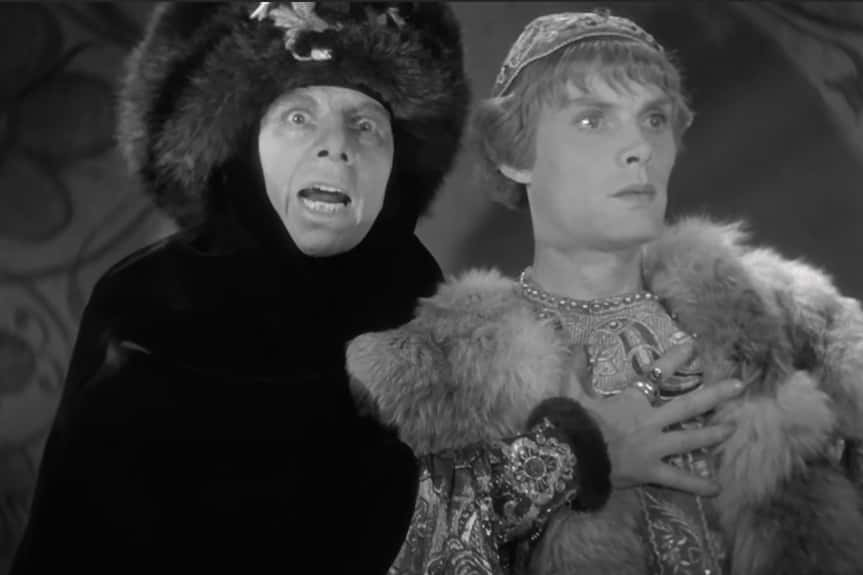 Ivan the Terrible, Part I (1944), Mosfilm
Ivan the Terrible, Part I (1944), Mosfilm
45. Sodom, Gomorrah, and Novgorod
Apparently, killing his own cousin only whet Ivan's appetite for carnage. And where did most of Vladimir's friends and supporters live? Novgorod, of course! Ivan's next act was something completely unprecedented and absolutely insane: the Tsar of Russia launched a military attack...on one of his own cities. And this wasn't just any ordinary army. He sent the oprichniki to teach Novgorod a lesson.
One historian described what happened next as "the most repulsive episode in the brutal history of the oprichnina. The cruel, senseless slaughter of innocent people made oprichnina synonymous with lawlessness and excess."
46. He Didn't Need a Reason, but He Still Made One Up
To defend his horrific actions, Ivan claimed that Novgorod planned to defect from Russia and join nearby Poland-Lithuania. Of course, there's absolutely no concrete evidence to back up his claim, but that wasn't about to stop him. In the summer of 1569, Ivan pointed the oprichniki towards Novgorod. They left a path of destruction in their wake, terrorizing every village they came across.
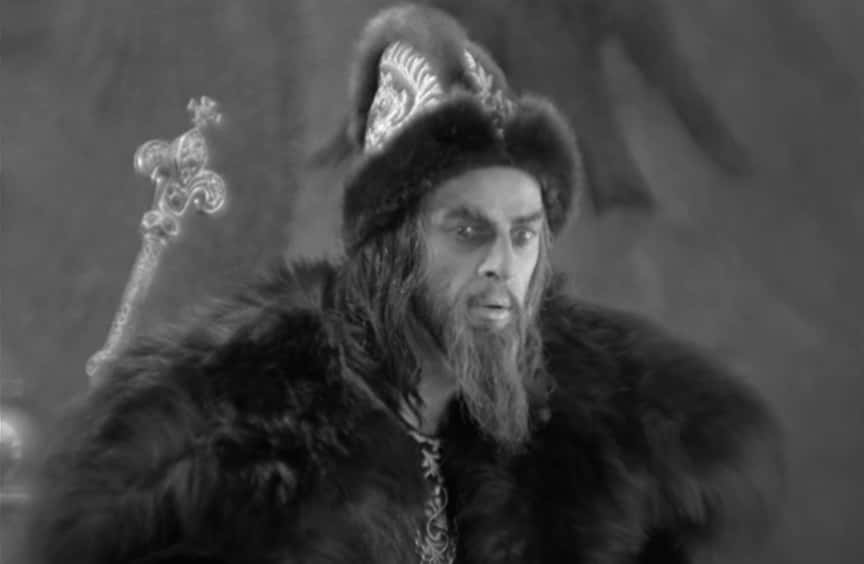 Ivan the Terrible, Part II (1958), Mosfilm
Ivan the Terrible, Part II (1958), Mosfilm
47. Path of Destruction
In each of the villages that Ivan's army passed through, he had all the prominent merchants and officials rounded up. Seeking proof that Novgorod was planning to defect, he had these men put to the question—and his methods were horrifying. Prisoners were roasted over bonfires, strung up by their hands, and subjected to a horrifying fire-making device known only as a "grill."
Ivan didn't find the proof he wanted, but he'd come too far to let that stop him. Finally, they made it to the city, and that's when the true nightmare began.
48. No One Was Safe
The different classes of Novgorod all met different fates in the massacre—but all of them were equally horrible. Members of the church were rounded up, subjected to horrific "interrogation" methods, and either thrown in prison or executed outright. The nobles who were left saw the brunt of Ivan's wrath: their homes were burned, their possessions were taken, and they were executed on masse.
Ivan's main beef was with the Church and the nobility, so for the most part, his men didn't attack the city's working classes outright. But in a way, they met the darkest fate of all.
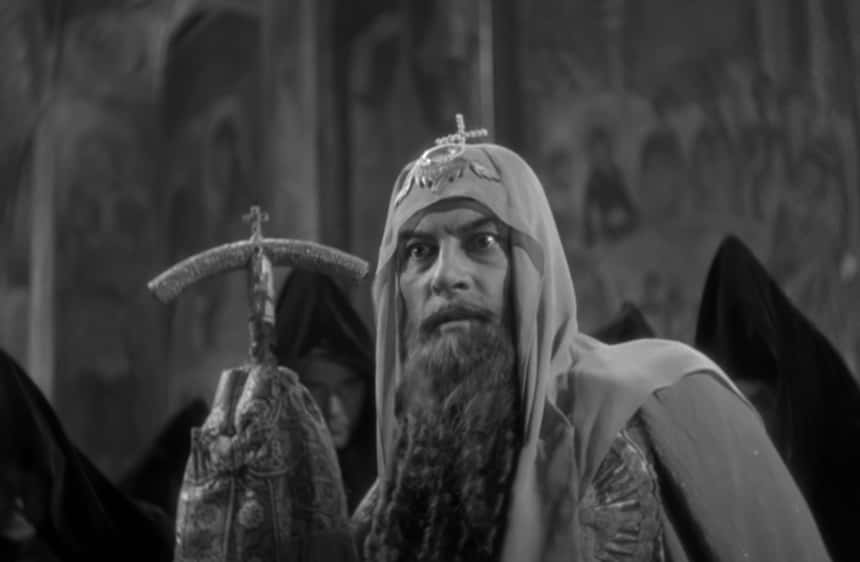 Ivan the Terrible, Part II (1958), Mosfilm
Ivan the Terrible, Part II (1958), Mosfilm
49. To Die in the Russian Winter
Remember how Ivan's brutal policies had led to widespread famine? Well, that meant that thousands of impoverished peasants had fled their land and traveled to Novgorod for shelter. When Ivan arrived, he had these innocent souls cast out of the city in the middle of winter. Countless peasants died of exposure and starvation outside of the city's walls while the carnage continued inside.
50. The River Styx
When they tired of killing, the oprichniki started letting the brutal Russian winter do their dirty work for them. Men, women, and children were all indiscriminately tied up and thrown into the Volkhov river, where they became trapped under the frigid ice. While this was happening, soldiers would patrol the waves in boats, armed with hooks and spears, to push anyone who tried to get out back under.
51. Salt the Earth
Ivan took out his rage on Novgorod for five horrific weeks. Thousands lay dead when he finally left, and the city would feel the effects of the massacre for generations. Not only was the population decimated, but Ivan also laid waste to the farmland surrounding the city. The region was already suffering from a famine, but this ensured that the populace wouldn't recover for years. Yet the ramifications of the attack went even deeper than that.
The remaining citizens had to grapple with the psychological trauma from the fact that they were attacked by their own ruler. It was a blow from which the city never truly recovered, and Novgorod never again rivaled Moscow in influence.
52. The Beginning of the End
The Massacre of Novgorod was the darkest moment in the history of the oprichnina, but it also marked the beginning of its end. First, the atrocity was a stain on Ivan's reputation. Also, when Ivan sent his oprichniki into battle against the Crimean army not long after, they were utterly humiliated. It turns out, fighting real soldiers is different than attacking helpless citizens.
Just three years after the massacre, Ivan ended the oprichnina and disbanded the oprichniki.
53. Hey, At Least He Built One Nice Church!
Ivan the Terrible's legacy is truly...terrible, but it wasn't all bad. It was Ivan who ordered the construction of the world-famous St. Basil's Cathedral in Moscow. According to legend, when he first laid eyes on the finished Church, he was so taken aback by its beauty that he had the architect blinded, so that he might never create something so beautiful again.
Now, this story is completely false, and the architect went on to create many more buildings, but it gives you an idea of the kind of reputation Ivan left behind.
54. Pen Pals
While Ivan's nightmarish reign seems like something out of the darkest chapters of Game of Thrones, he actually ruled at the same time as Queen Elizabeth I of England, a famously civilized monarch. In fact, the two of them corresponded with each other for years, and Ivan even made a deal with Elizabeth so that he'd be allowed to stay in England if his people ever rose up against him and he was forced to flee Russia.
55. He Couldn't Protect His Own Territory
Things didn't get much better as Ivan's reign went on. The later years of his rule saw his southern borders beset by Crimean raiders almost constantly. These armies attacked Russia in order to capture citizens to be sold as forced laborers in the Ottoman Empire. And since Ivan was still fighting the now-decades old Livonian War in the north, he had no men left over to defend his own territory.
But while it started with raids on Russian borders, in 1571, the Crimean armies dealt Ivan an utterly devastating blow.
56. Moscow Burns...Again
That year, the Crimean Khan Devlet I led 40,000 men right into the heart of Ivan's territory—straight to Moscow itself. With most of the Russian army off fighting Ivan's failing war, Moscow had just 6,000 men to defend itself. The tiny garrison couldn't even slow the Crimeans down. Devlet and his men attacked the city and burned it to the ground—the second time that had happened in Ivan's reign, for anyone keeping count.
Anywhere from 10,000 to 80,000 people perished in the flames. According to one historian, it took over a year to clear away the bodies that clogged the streets.
57. Finally, Someone Does Something Right
Once wasn't enough for Devlet of Crimea. He launched yet another attack on Moscow the following year—but this time it went a little differently. Though the Russians were outnumbered once again, the brilliant Prince Mikhail Vorotynsky led them to a shocking victory. Vorotynsky completely routed the Crimeans and sent them heading for the hills, saving Moscow from another massacre.
One would think that Ivan would be eternally grateful to his heroic commander. What really happened was much, much darker.
58. Are You Even Surprised at This Point?
How did Ivan the Terrible thank the general who saved Moscow? Just a year later, Ivan accused Vorotynsky of treason and personally subjected him to truly horrific questioning (we'll spare you the details, but let's just say, fire was involved). Vorotynsky died of his injuries soon after. Absolutely no one was safe from Ivan madness—not even those who served him the best.
59. Fool Me Once, Shame on You...
If a plan works once, why not try it again? In 1575, Ivan pretended to abdicate his throne for the second time—and somehow, this scheme was even more underhanded than the last one. This time, he proclaimed a man named Simeon Bekbulatovich to be his successor. In reality, the new Tsar was just a puppet, and Ivan continued to rule behind the scenes. Pretty sleazy, right? You don't even know the half of it...
60. You Can't Make This Stuff Up...
When Tsar Simeon confiscated every monastery in Russia's land, sweet, humble Ivan publically denounced the decision. Then, when the people got fed up of Simeon and Ivan returned to the throne, he showed his good nature by returning some of the land that Simeon had taken—while keeping a good chunk of it for himself, of course. It turns out, the whole thing had been a plan to snatch lands away from monasteries, but this way, he came out looking like the good guy.
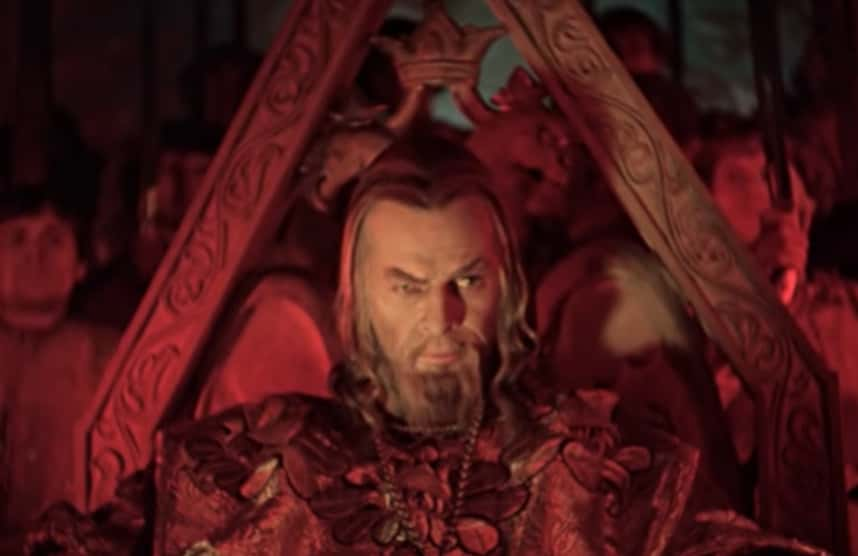 Ivan the Terrible, Part II (1958), Mosfilm
Ivan the Terrible, Part II (1958), Mosfilm
61. Cause of Death...Married Ivan the Terrible
Throughout all of this chaos, Ivan's personal life was just as tumultuous. After his first wife was poisoned, he married three more times. Two of his subsequent wives also died of poison. The fourth wife, he had sent to a convent when he tired of her. But no matter what was happening at home or away, his son Ivan Ivanovich stood there by his side. He was present at the Massacre of Novgorod and saw the rise and fall of each of the Tsar's wives—but before long, cracks in their relationship started to show.
62. Domineering Dad
To give you an idea what it was like being Ivan the Terrible's kid, the Tsar forced his son to marry, then divorce, then remarry, then redivorce, then remarry again. First, he had the young Ivan marry a woman who he himself had almost hooked up with (awkward). After this first wife didn't get pregnant immediately, he annulled the marriage, banished her to a convent, then tried again. The Tsesarevich's second wife didn't get pregnant any faster than than the first, so she also got the boot, and the whole song and dance started up again.
Finally, Tsesarevich Ivan's third wife, Yelena, got pregnant soon enough for the Tsar's liking, and she was allowed to stick around. Gosh, being Ivan the Terrible's son sounds exhausting.
63. The Lesser Brother
Ivan's other son, Feodor Ivanovich, was a mere child when his mother died. As his father grew more and more insane, Feodor had only his brother to look out for him. He was also a frail and sickly child who grew up to be a shy and unconfident man. Not exactly the ideal person to inherit the mess that Ivan the Terrible would leave.
64. You've Gotta Admit—It's Kinda a Cool Nickname
Feodor I of Russia didn't amount to much, but at least he could boast one thing: he had a better nickname than his father! Since the world of politics and warfare terrified him, Feodor fell in love with religion instead. He spent much of his time in churches, and he always made sure that the priests there would ring the bells according to Orthodox tradition. Because of this, he came to be known as Feodor the Bellringer.
Unfortunately, that's about all he accomplished...
65. It Seems Like Ivan's Entire Family Was Cursed
After the death of his brother, Feodor became painfully lonely, and he took solace in the arms of his beloved wife. But while his wife was a bastion of support, their relationship only caused him more pain. After years of trying, they finally gave birth to a young daughter. The couple adored the child and they doted on her constantly, but tragically, she died at just two years old. Feodor and his wife never had a child again.
66. A Simple Death for a Terrible Man
After his horrific reign, one would think that Ivan the Terrible would have been assassinated, or perhaps killed in some misguided military venture, but no. Ivan the Terrible died of a stroke while playing a game of chess. Such a simple way for such a monstrous man to die.
67. He Suffered a Painful End
Soviet scientists excavated Ivan the Terrible's grave in 1963. His bones painted a grim picture of his final days. At the time of his death, the Tsar suffered from several debilitating bone diseases that would have left him in constant pain and barely able to move. They also found high levels of mercury in his body, likely from ointments he would have taken to try and ease his agonizing joints.
68. Oh, the Irony...
Ivan the Terrible was the definition of a tyrant. He helped create the idea that the Tsar was an absolute power, accountable to no one but God—someone who could essentially do whatever he wanted with zero repercussions. It was this attitude that eventually made the Russian people so fed up that the Soviets were able to topple the monarchy and take control.
How ironic, then, that the Communist regime then spun Ivan's legacy to make him a symbol of nationalist pride. Specifically, Joseph Stalin identified himself with Ivan. In hindsight, that actually makes a lot of sense...
69. Imagine Inheriting a Building on Fire
Believe it or not, Ivan's absolutely disastrous reign left Russia on the brink of ruin by the time of his death. His failed wars, heavy taxation, and economical mismanagement ensured that his weak-willed son Feodor was pretty much doomed from the start. But still, if anything, Feodor still managed to do worse than anyone expected.
70. From Bad to...Still Bad?
Not only did Tsar Feodor I do little to improve the Russian economy during his reign, but his inability to father an heir meant that upon his death, there was a succession crisis. This led to the infamous Time of Troubles—15 years of chaos and anarchy as several forces vied for the Russian throne. But, while the Time of Troubles were a dark period in Russian history, were they any worse than the nightmares that Ivan the Terrible had unleashed for decades?
71. "Trouble" is an Understatement
The Time of Troubles were, to put it lightly, troubling. Within just a few years of Feodor's death, yet another brutal famine struck Russia. This one was particularly horrible—approximately one-third of the entire country's population perished. On top of that, the Polish-Lithuanian Commonwealth took advantage of the chaos to occupy massive swaths of Russian territory.
Even decades after his death, Ivan the Terrible still somehow managed to make things awful for the people of Russia.
72. The Tsar is Dead—Long Live the Tsar
Finally, the Time of Troubles came to a close when the Russians elected a man named Michael Romanov to be the new Tsar. Does that name sound familiar? Probably because the Romanov Dynasty would continue to rule Russia for centuries until they were finally brought down in the February Revolution of 1917.
73. Oh Maria, You Could Have Done So Much Better...
Ivan took a second wife not long after Anastasia died. He chose the utterly beautiful (and 17-year-old) Maria Temryukovna—but this union was doomed to an utterly chilling end. Ivan was infatuated with Maria at first sight, but he soon came to regret his decision to marry her. She was illiterate, temperamental, and infamously vindictive. She was also apparently terrible with Ivan's two young sons, and on top of all that, the people of Moscow hated her almost instantly.
By all accounts, Maria Temryukovna was not an ideal Tsaritsa—but she still didn't deserve the chilling end that she got.
74. Her Death Seemed a Little Too Convenient
A few years after she married Ivan, Maria suddenly fell ill and died. Almost everyone assumed that the Tsar himself had poisoned her. To his credit, Ivan had several people killed on suspicion of assassinating his wife—but this is Ivan the Terrible we're talking about. Killing his wife, then killing a bunch of innocent people to cover his tracks, doesn't sound like that big of a stretch.
75. Fighting Father and Son
Ivan the Terrible did a lot of horrible things—but the death of his son Ivan was the darkest moment of the all. It all began when the devoted son started to admit that his father wasn't exactly doing a great job. The Livonian War was still going on, and it was going no better than it had for the last, I don't know, 20 years. The Tsarevich decided to take matters into his own hands and demanded Ivan give him troops so that he could liberate the besieged city of Pskov. For his part, Ivan couldn't care less about Pskov, and he began to resent his son's rebelliousness.
Things were tense already—but then, in one chilling outburst, Ivan the Terrible finally went too far.
76. It Was the Most Terrible Thing He Ever Did
On November 15, 1581, Ivan the Terrible was in a particularly violent mood. When he saw his pregnant daughter-in-law walking around in clothing that he didn't approve of, for whatever reason, he absolutely snapped. He viciously attacked her, and her screams brought the Tsarevich running to see what was happening. The son managed to pull the father off of his wife—but the violence was just getting started.
77. His Son was Finally Fed Up
Tragically, after Ivan attacked his daughter-in-law, she suffered a miscarriage. In their struggle, the younger Ivan screamed at his father, "You sent my first wife to a convent for no reason, you did the same with my second, and now you strike the third, causing the death of the son she holds in her womb!" The relationship between father and son had finally been irreparably damaged—but either way, it wouldn't last much longer.
78. He Tried to Turn the Tables
As the younger Ivan screamed at his father, the elder Ivan changed the subject to his son's recent insubordination related to the siege at Pskov. The Tsar accused his son of rebellion and treason. It was completely ludicrous, as per usual, but this time, the younger Ivan stood up to his father. He denied the accusations, but stood firm that the people of Pskov deserved to be liberated.
He had a point, but Ivan the Terrible was beyond reason by now.
79. My Son, My Son, What Have I Done...
Mad with rage, Ivan finally snapped. He grabbed his royal scepter and smashed it into his son's temple. One of his advisors, who was witnessing the fight, ran to stop him, but Ivan struck him as well. The Tsarevich fell to the ground, blood pouring from his head. The sight of his own son and heir lying bleeding on the ground finally snapped Ivan back to reality. He threw himself on top of his boy, sobbing, kissing his face, and crying, "I've killed my son! I've killed my son!"
80. He Killed His Own Child
Allegedly, Ivan Ivanovich regained consciousness just long enough to look up at his father and say, "I die as a devoted son and most humble servant." He quickly fell back into a coma, where he stayed for the next several days. Distraught, the Tsar desperately prayed for a miracle, but nothing was coming. After four days, Ivan Ivanovich died.
81. His Legacy Died With His Son
Ivan the Terrible's legacy is absolutely horrific, but killing his own son is the darkest stain of all. To make things worse, the younger Ivan had been a strong, effective, and determined leader. After he died, his brother Feodor was left as the heir to the throne, and he was a mere shadow of his older brother. In fact, though he couldn't have possibly realized it at the time, killing his own son ensured that everything Ivan the Terrible had built would fall to pieces within just a few years of his death.
82. Terrible
Ivan the "Terrible" is actually an indirect translation of his Russian sobriquet, Ivan Grozny. At the time, grozny would have meant something closer to "powerful," or "formidable." A man to be feared and respected, but not a man who's considered evil or monstrous. In fact, one historian claims that the name Grozny would have meant "magnificent" or "courageous."
But whether or not they meant it that way, now that we can look back upon Ivan's reign, I think "Terrible" was the perfect word.

